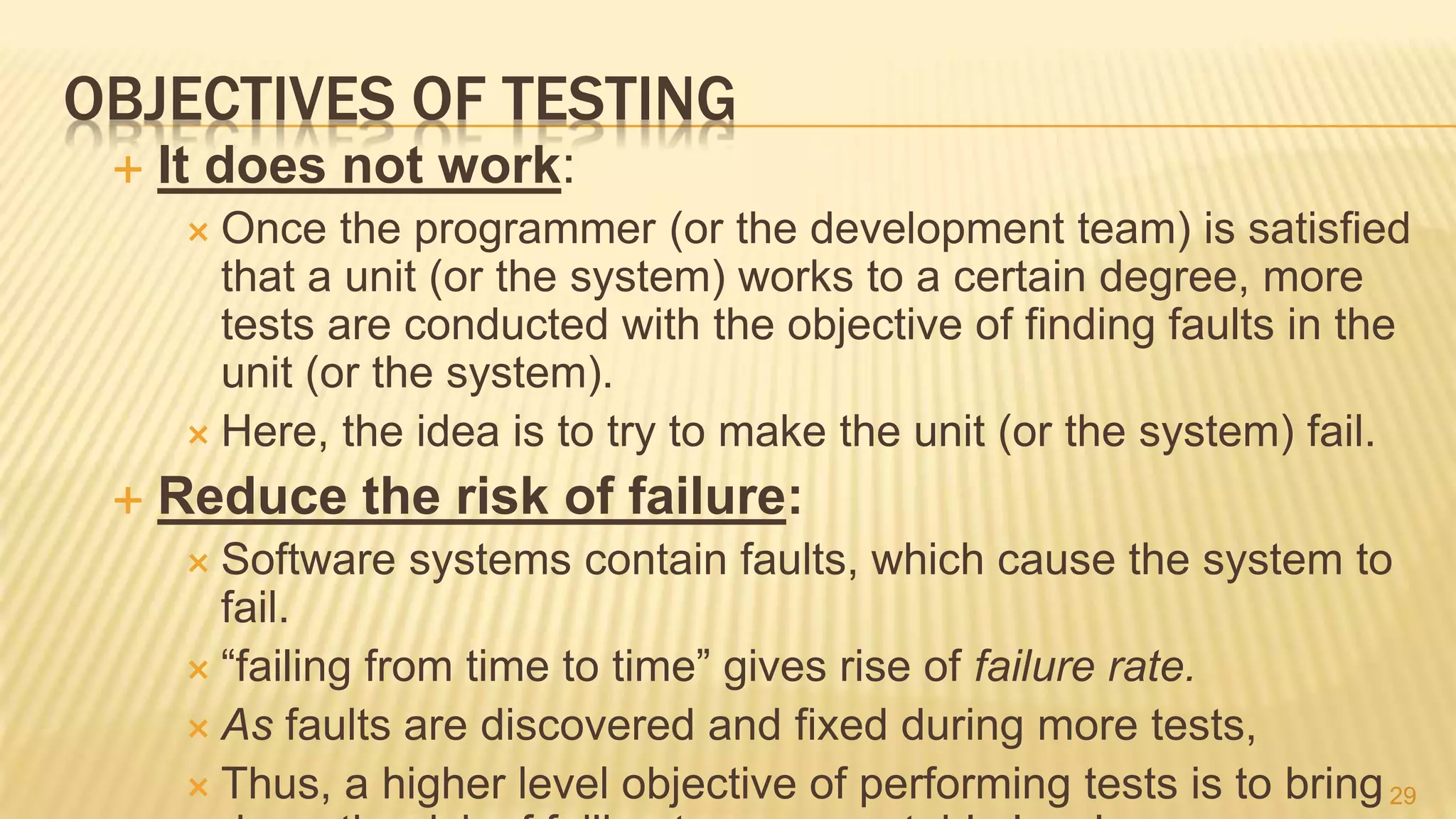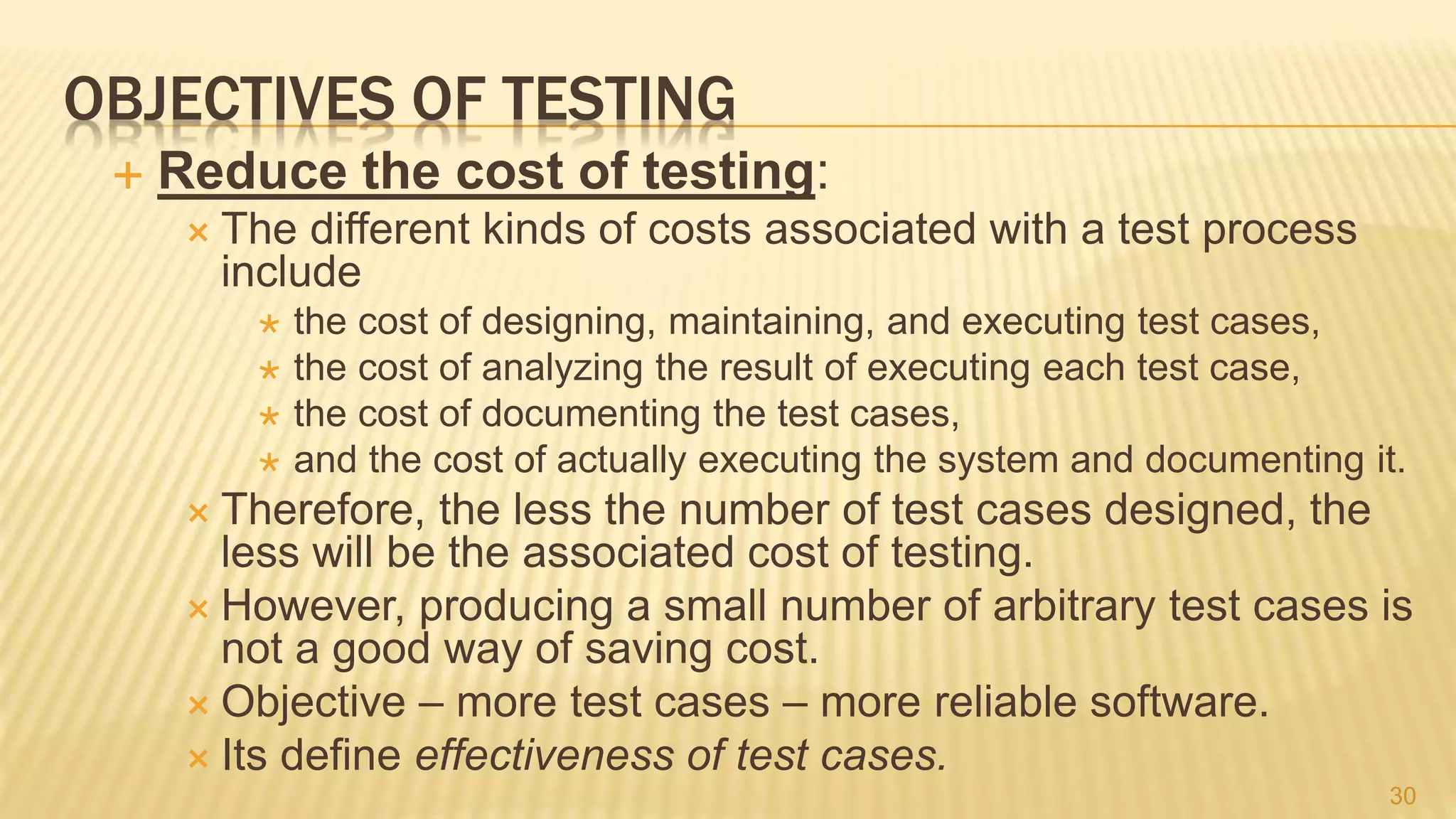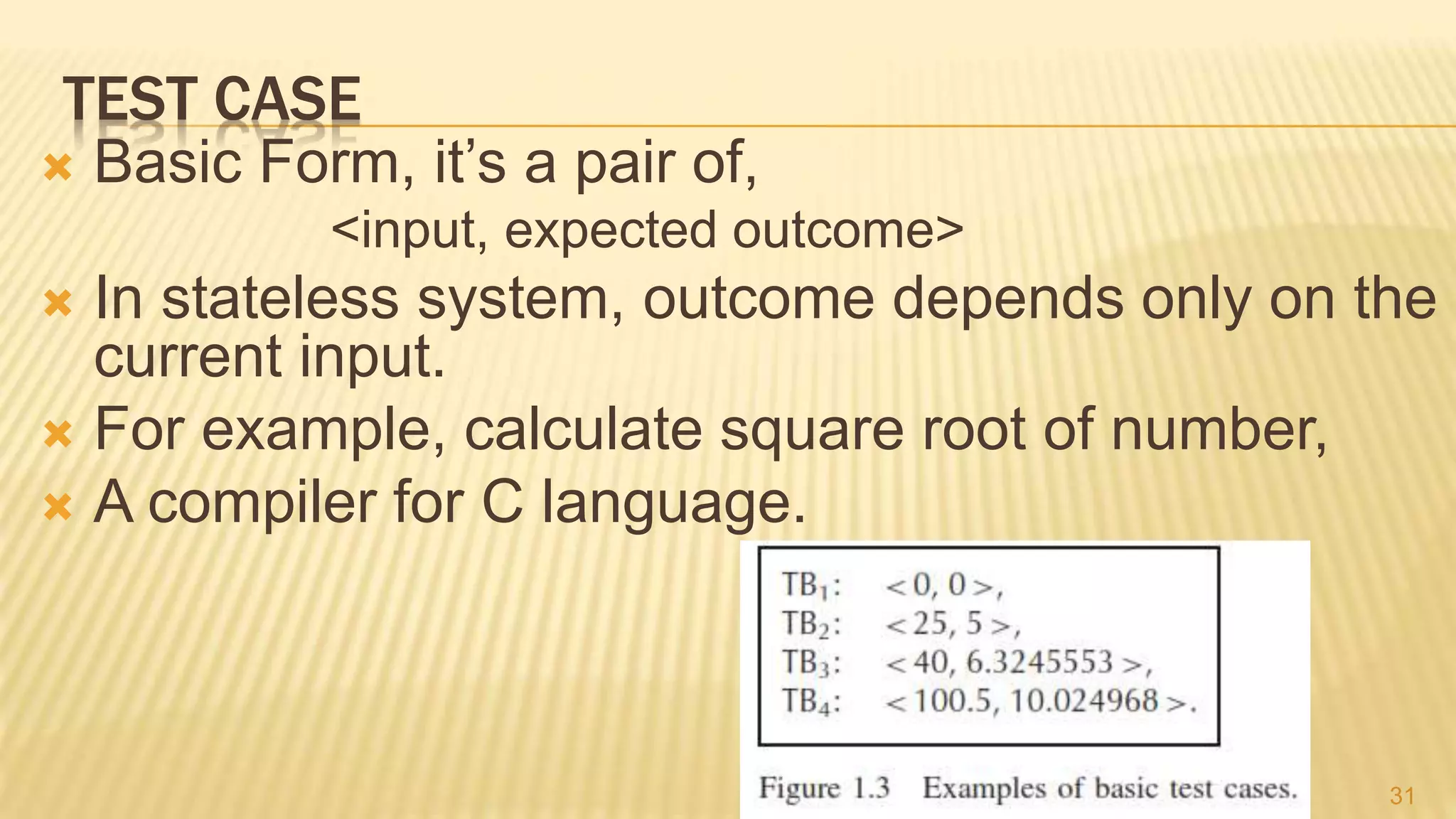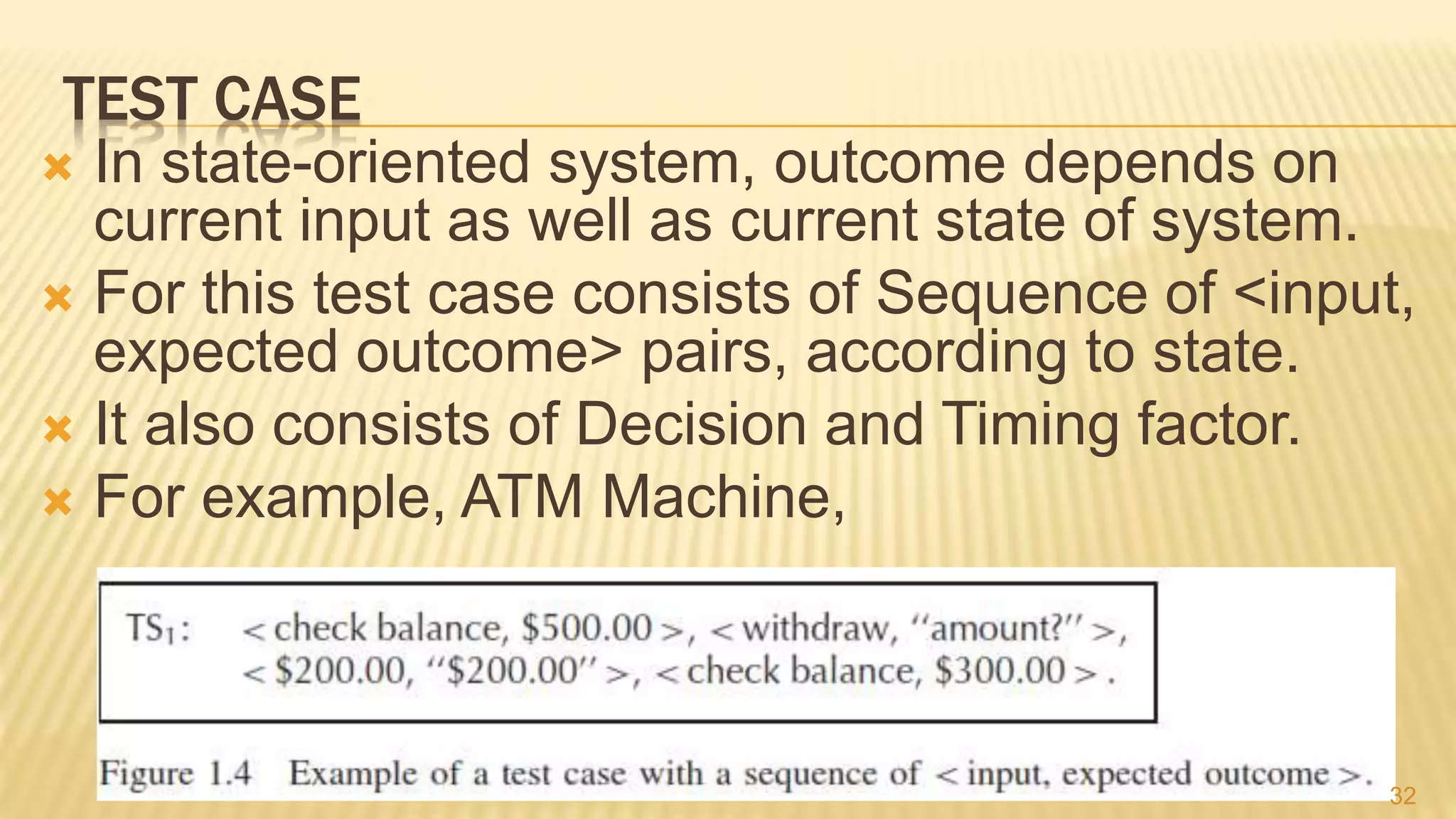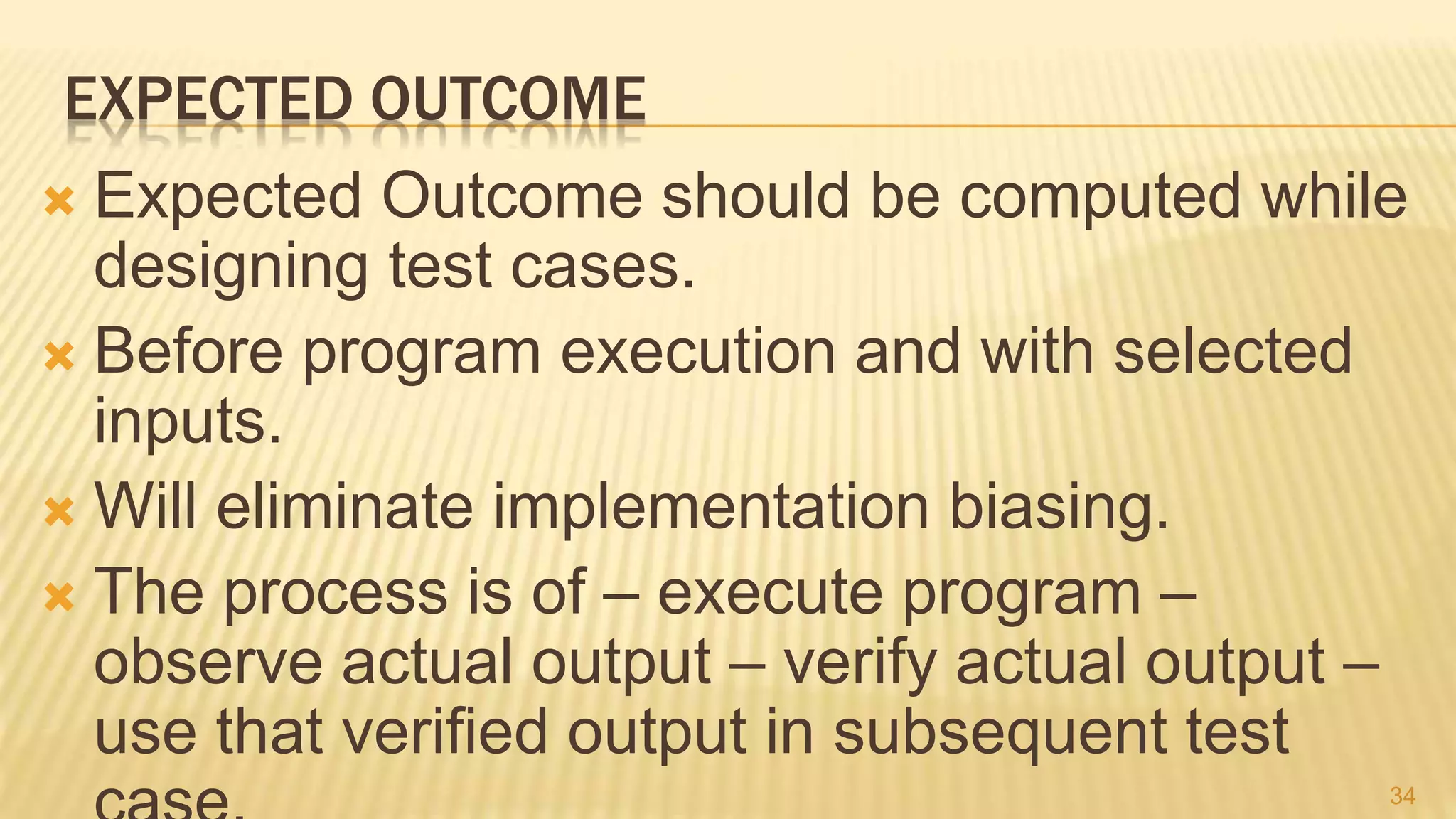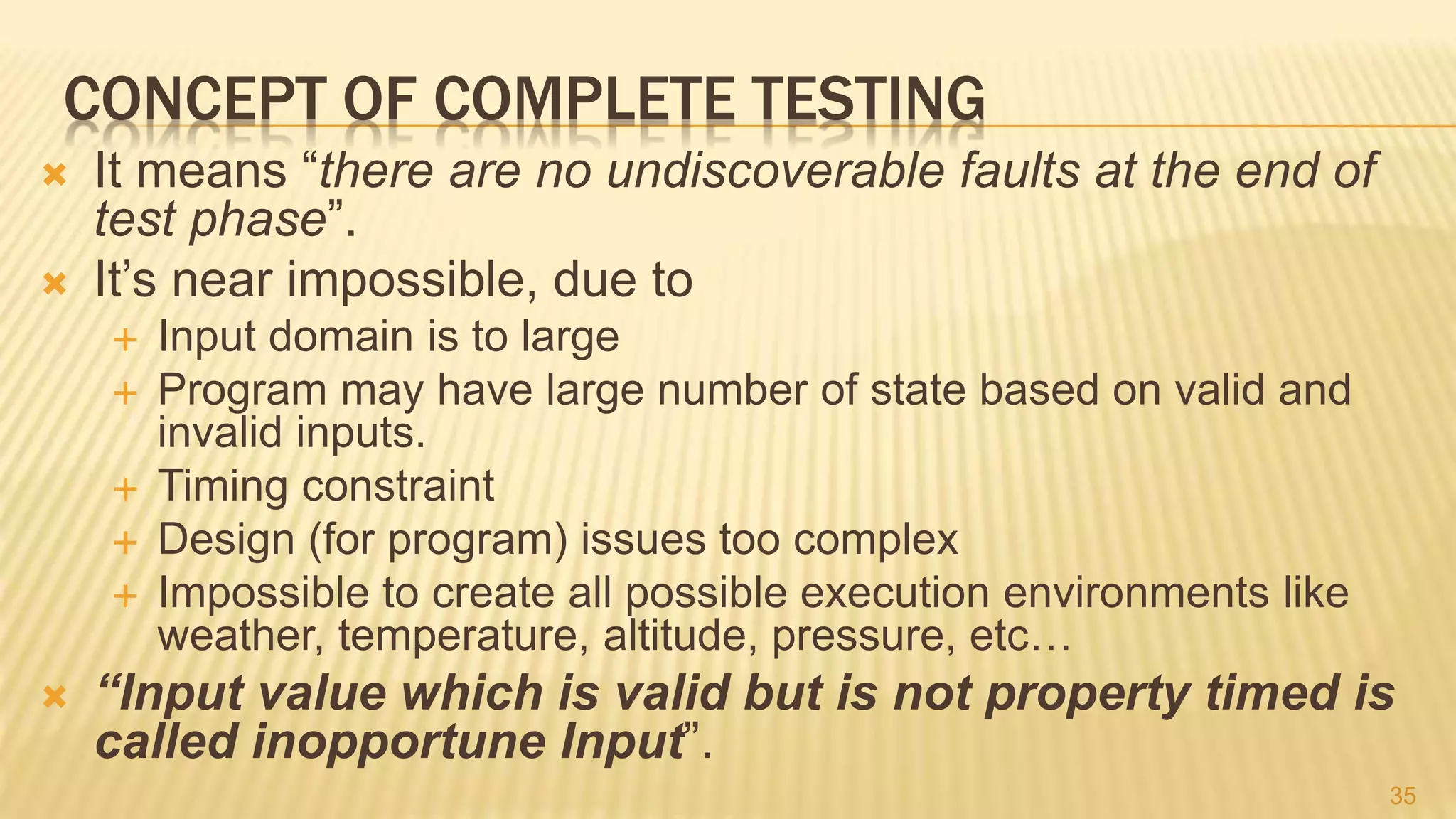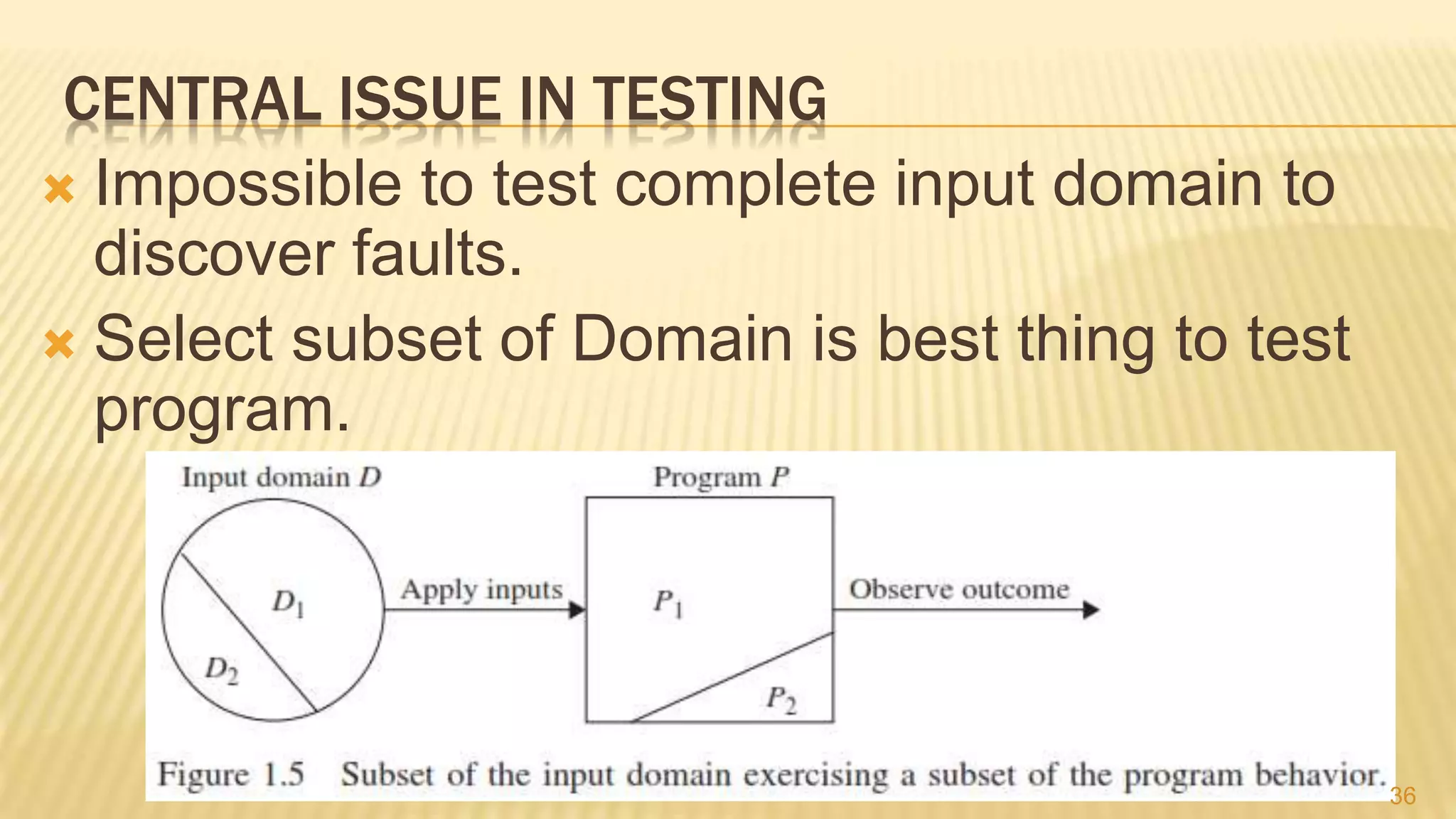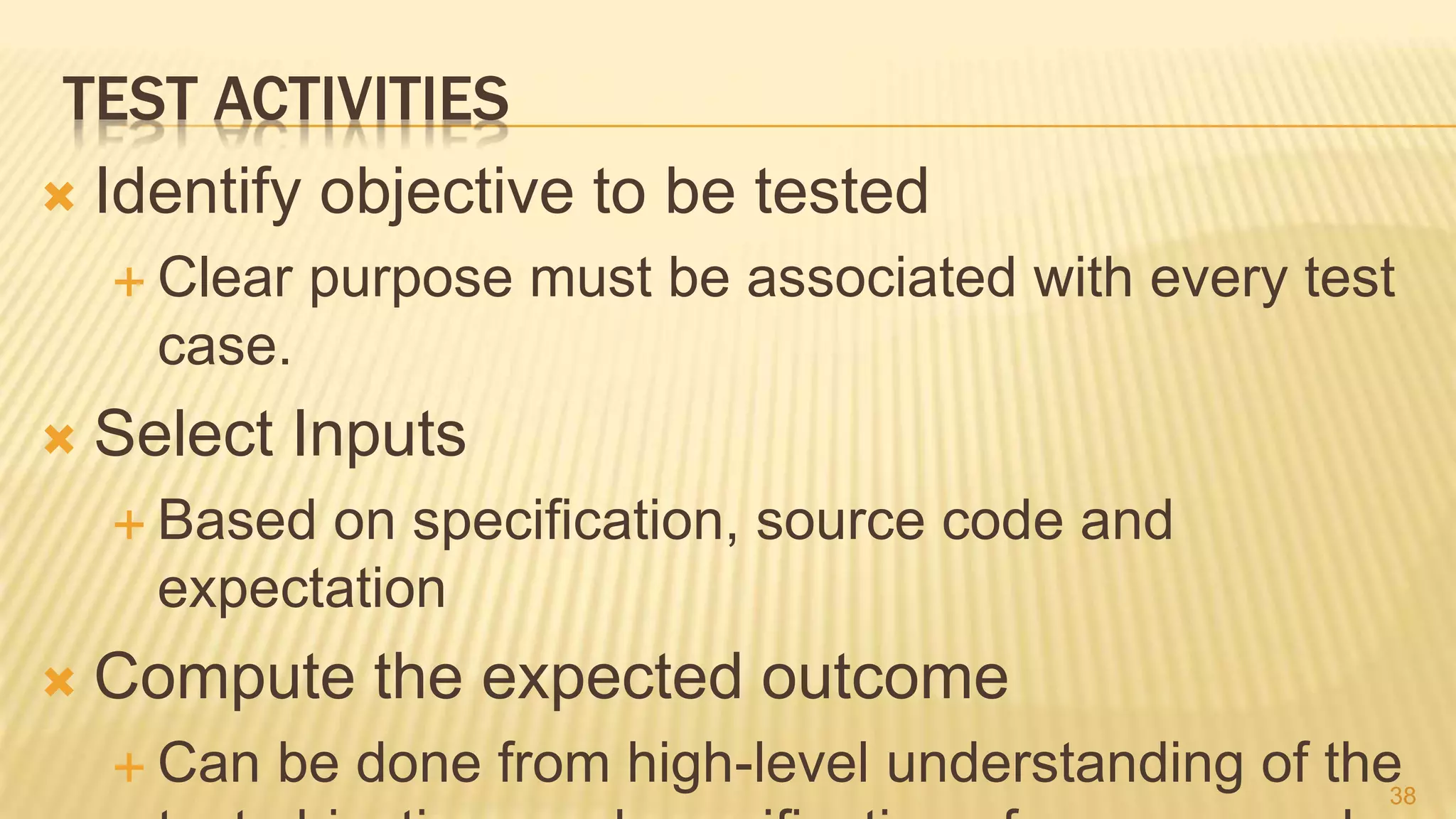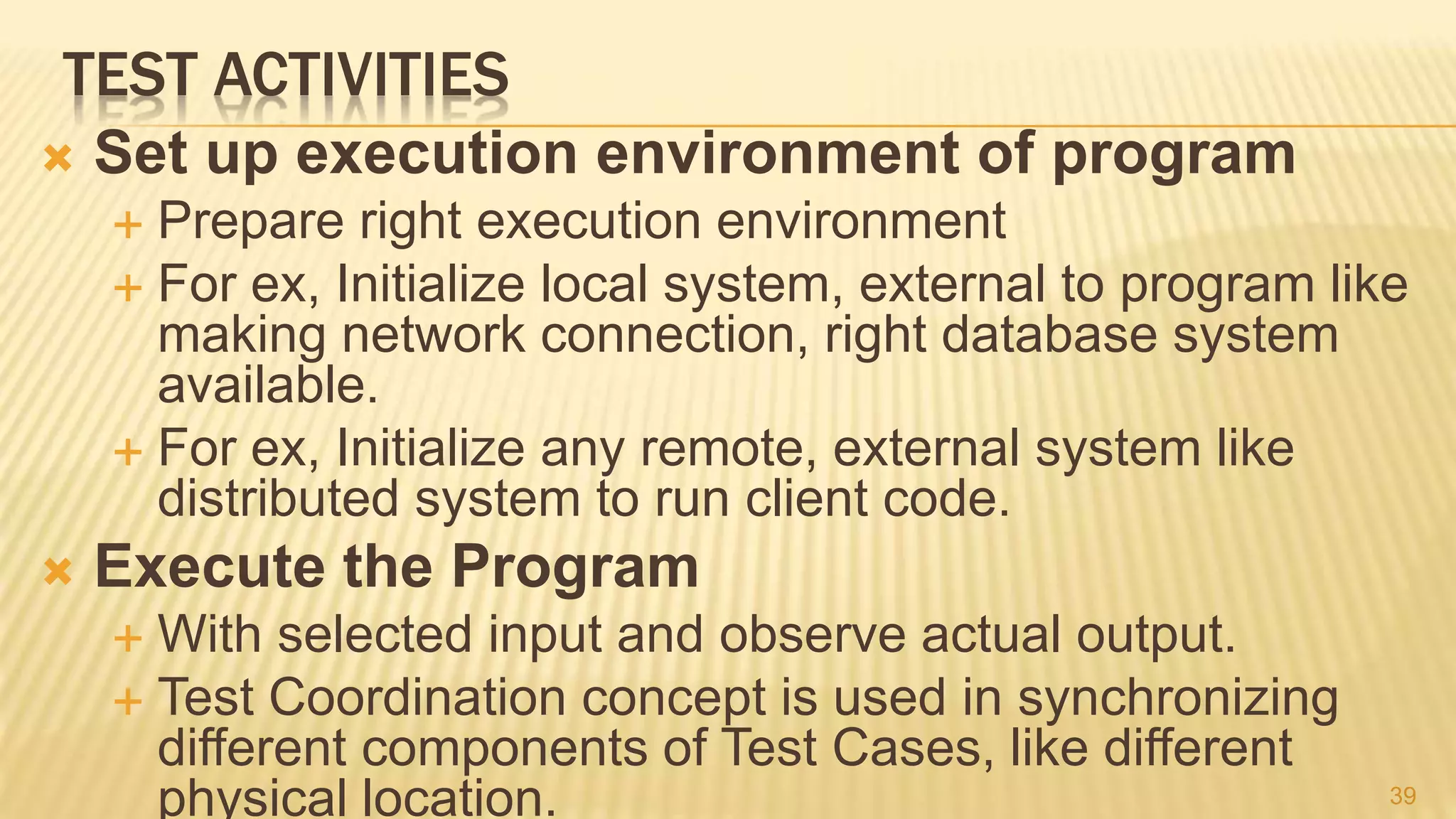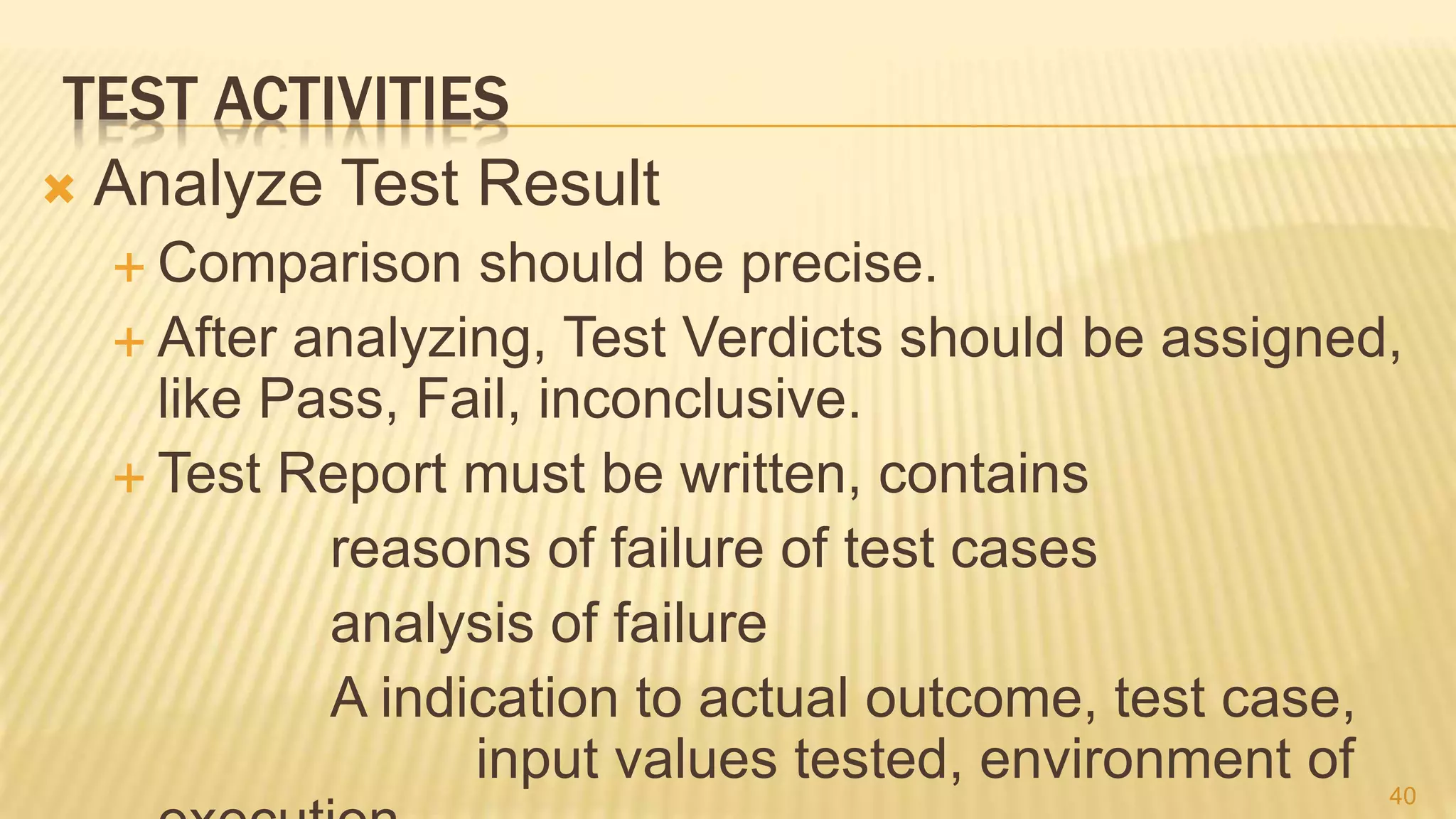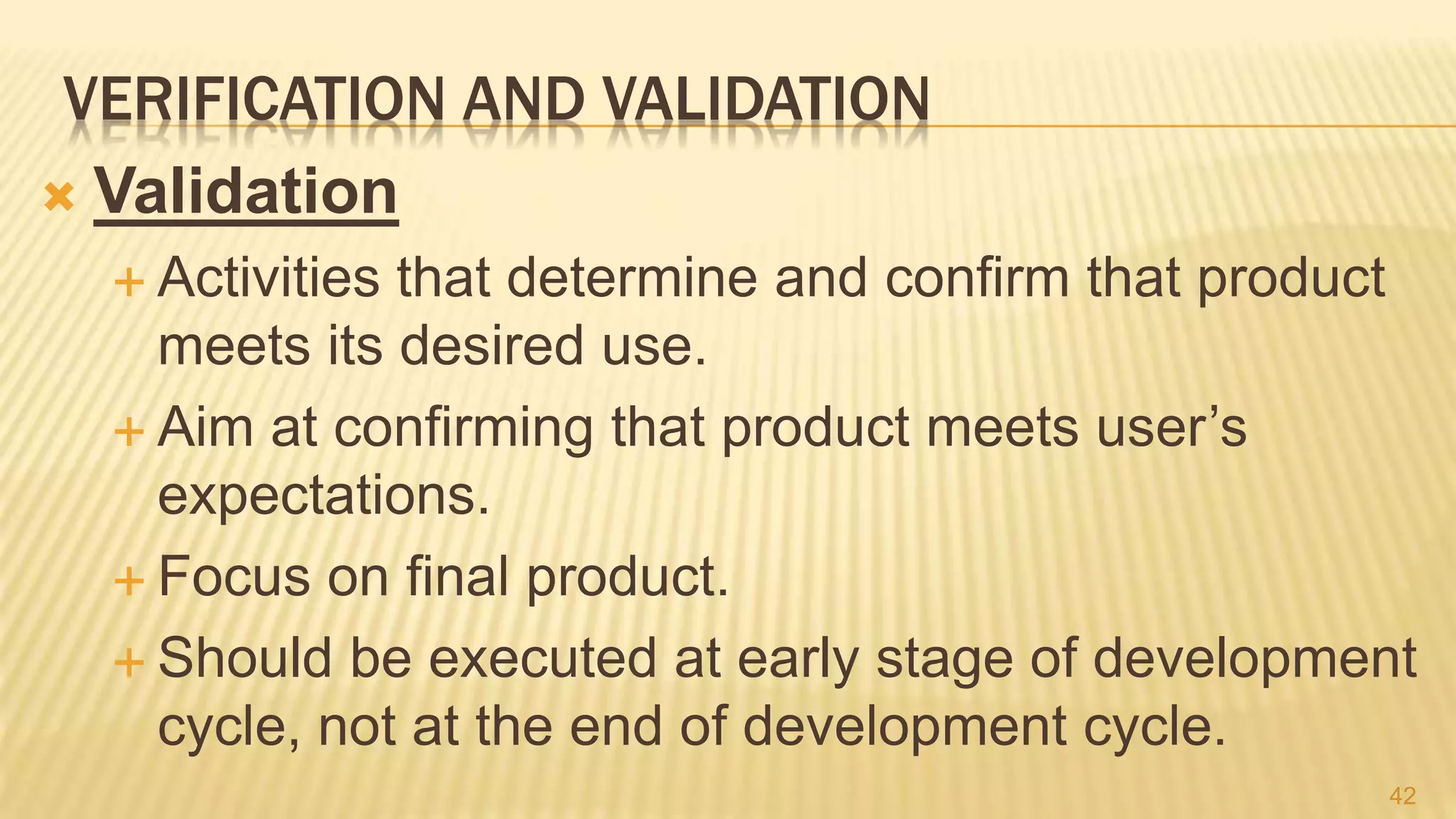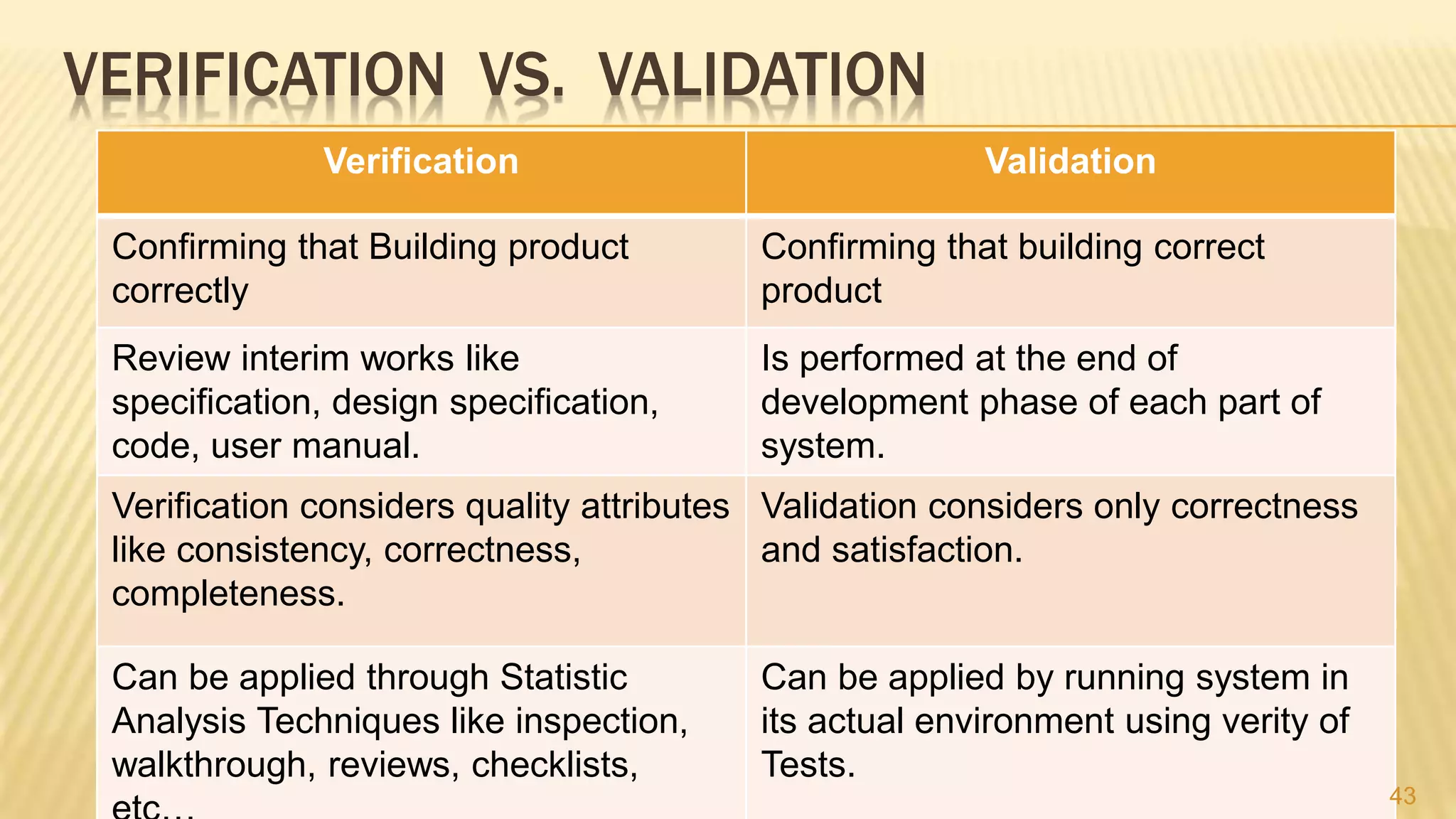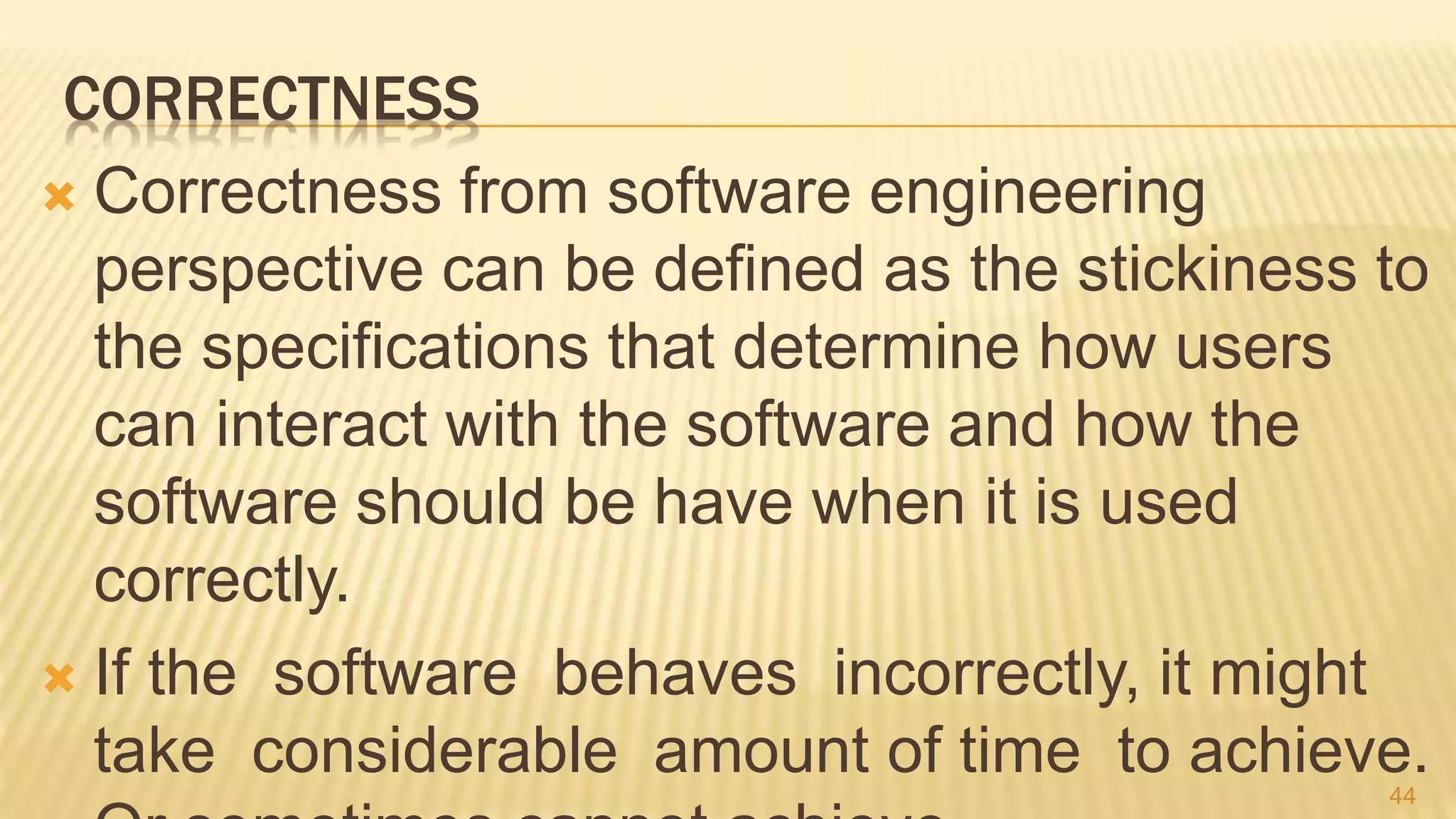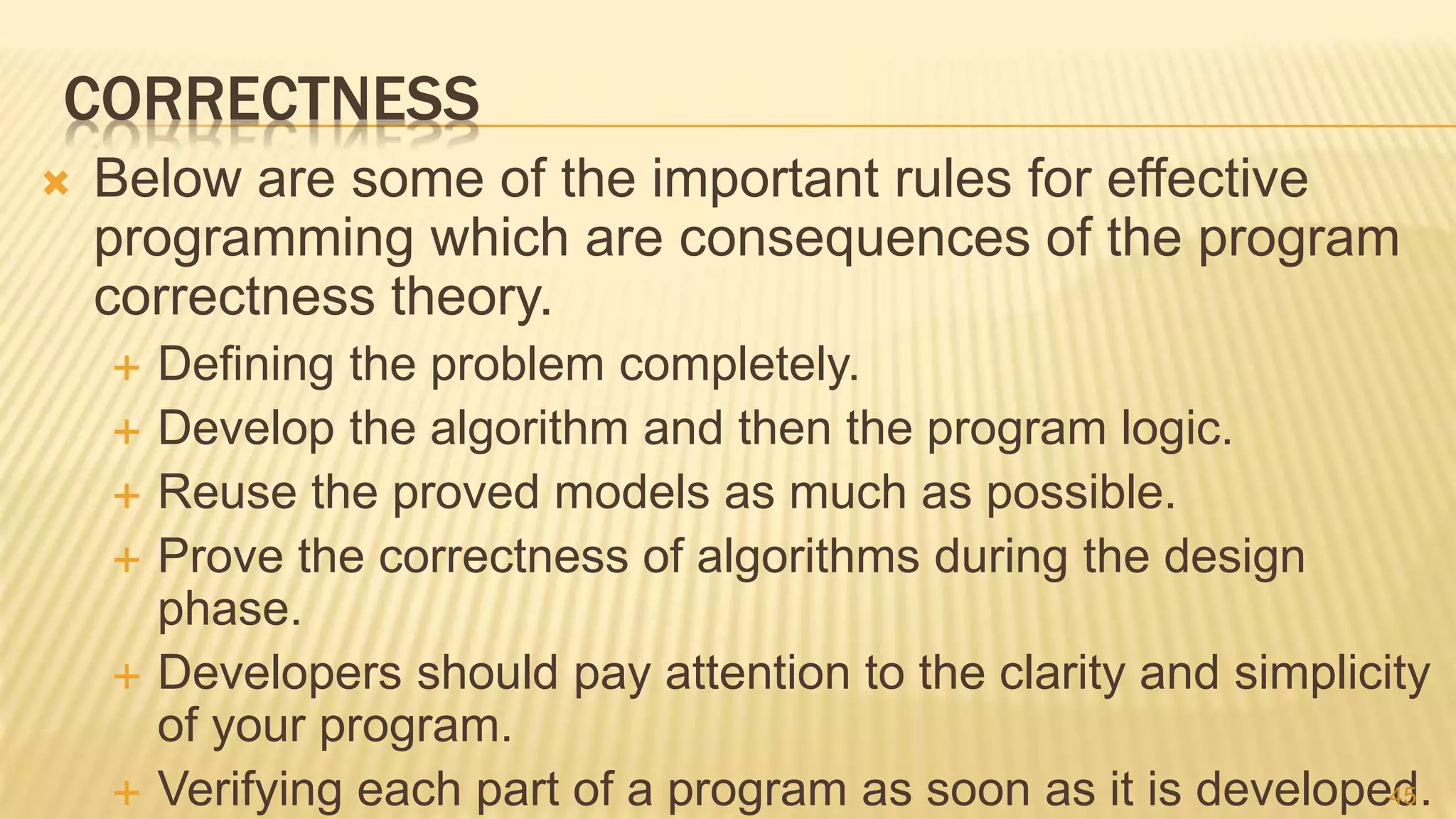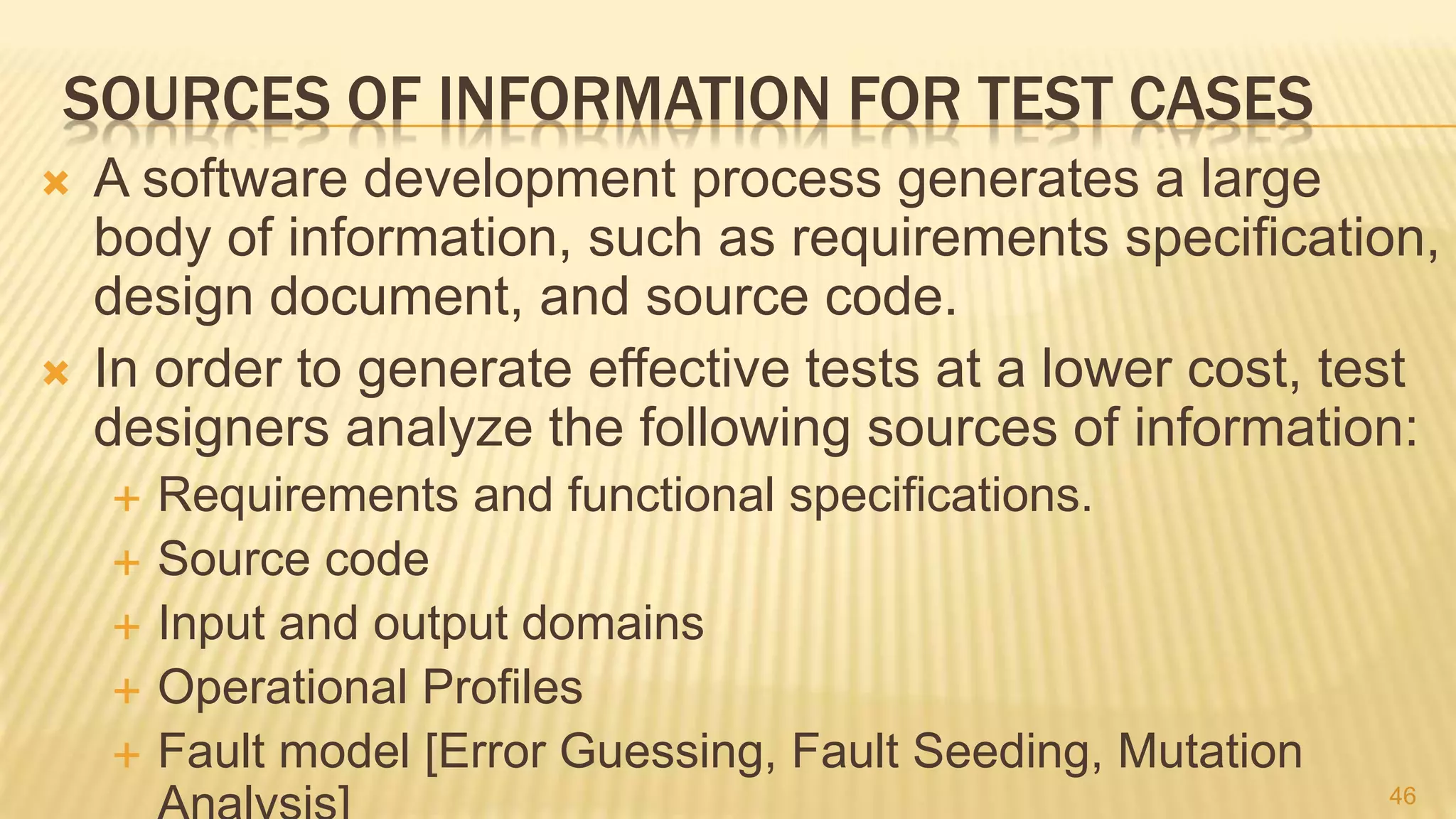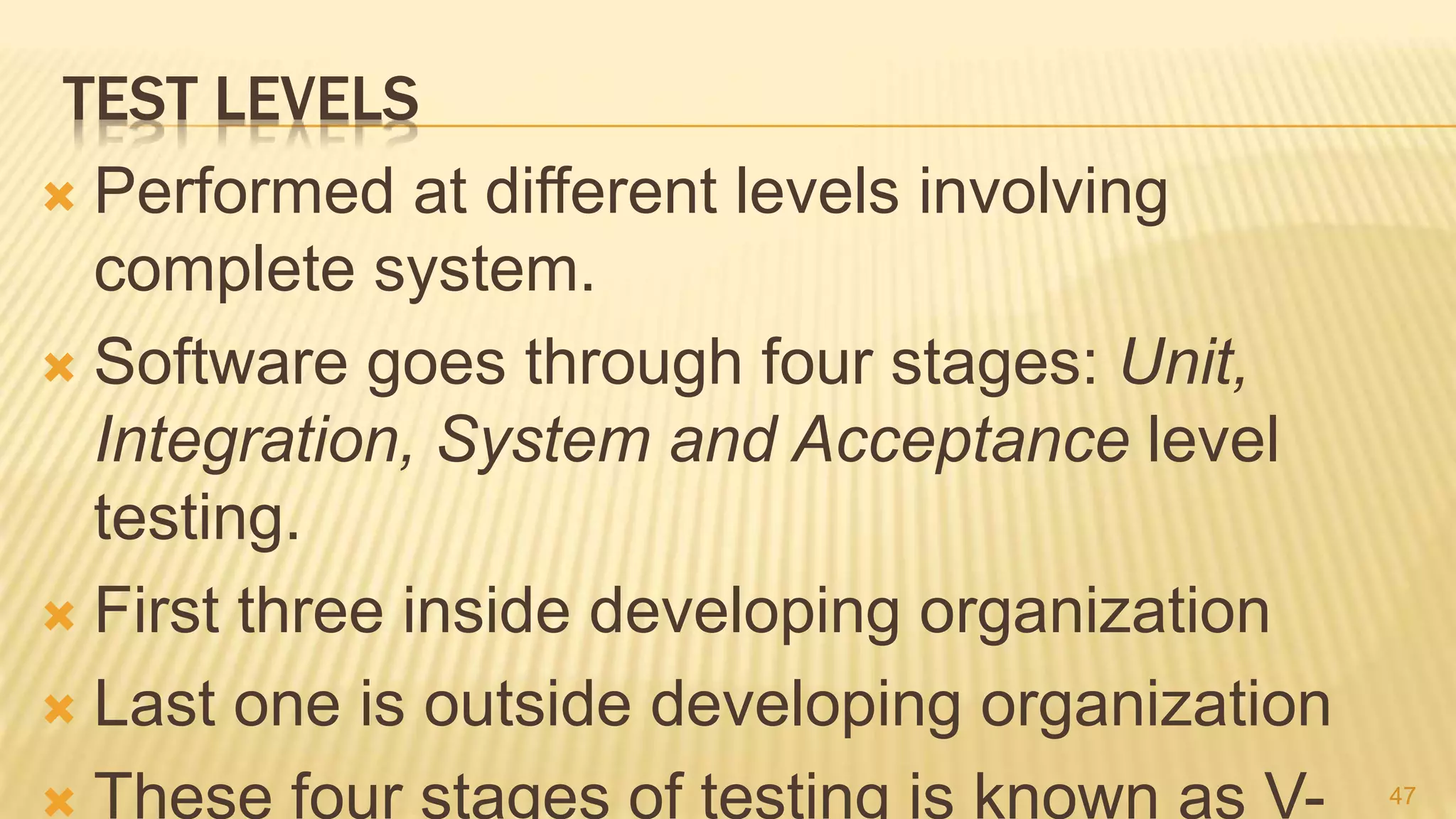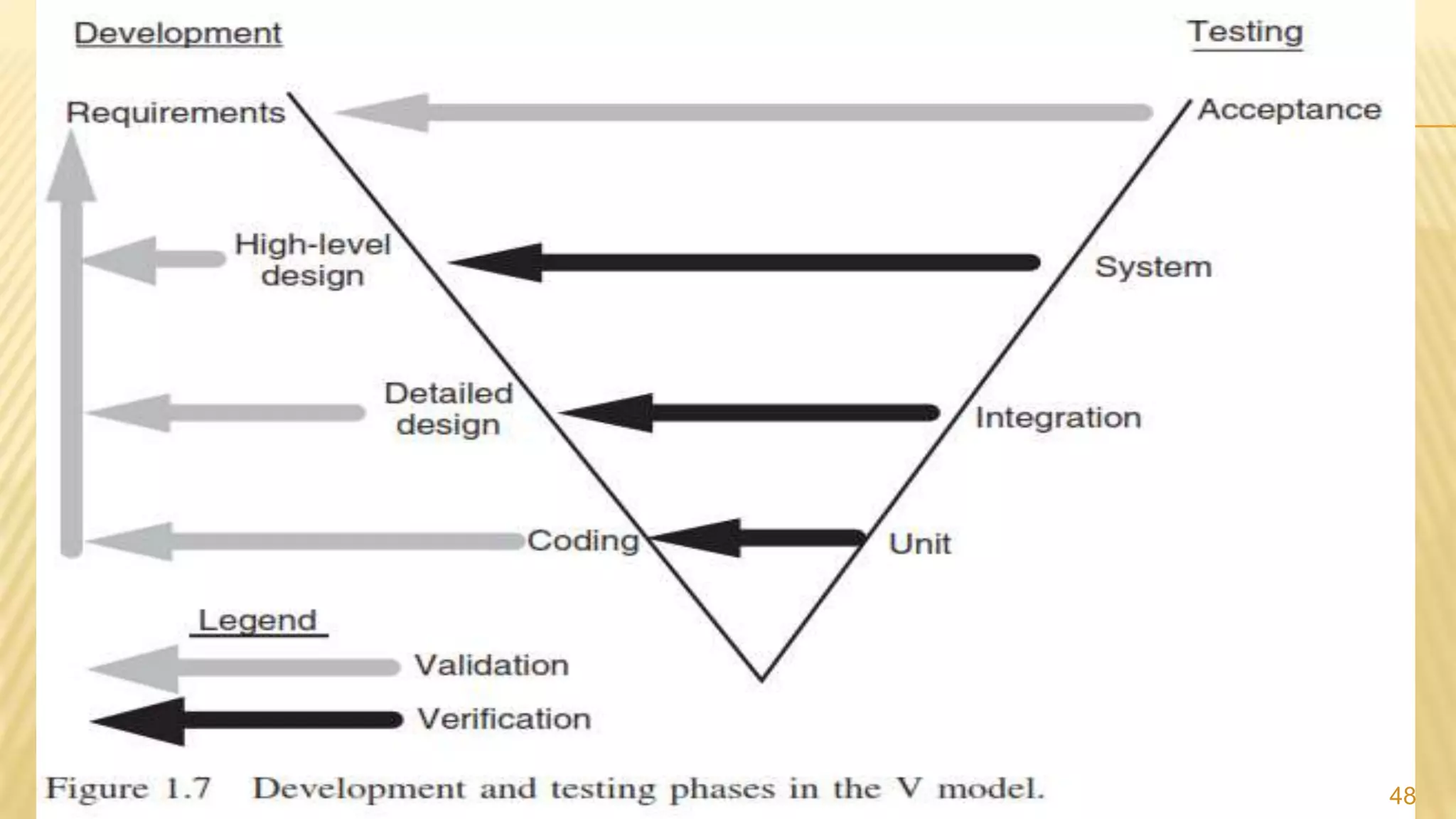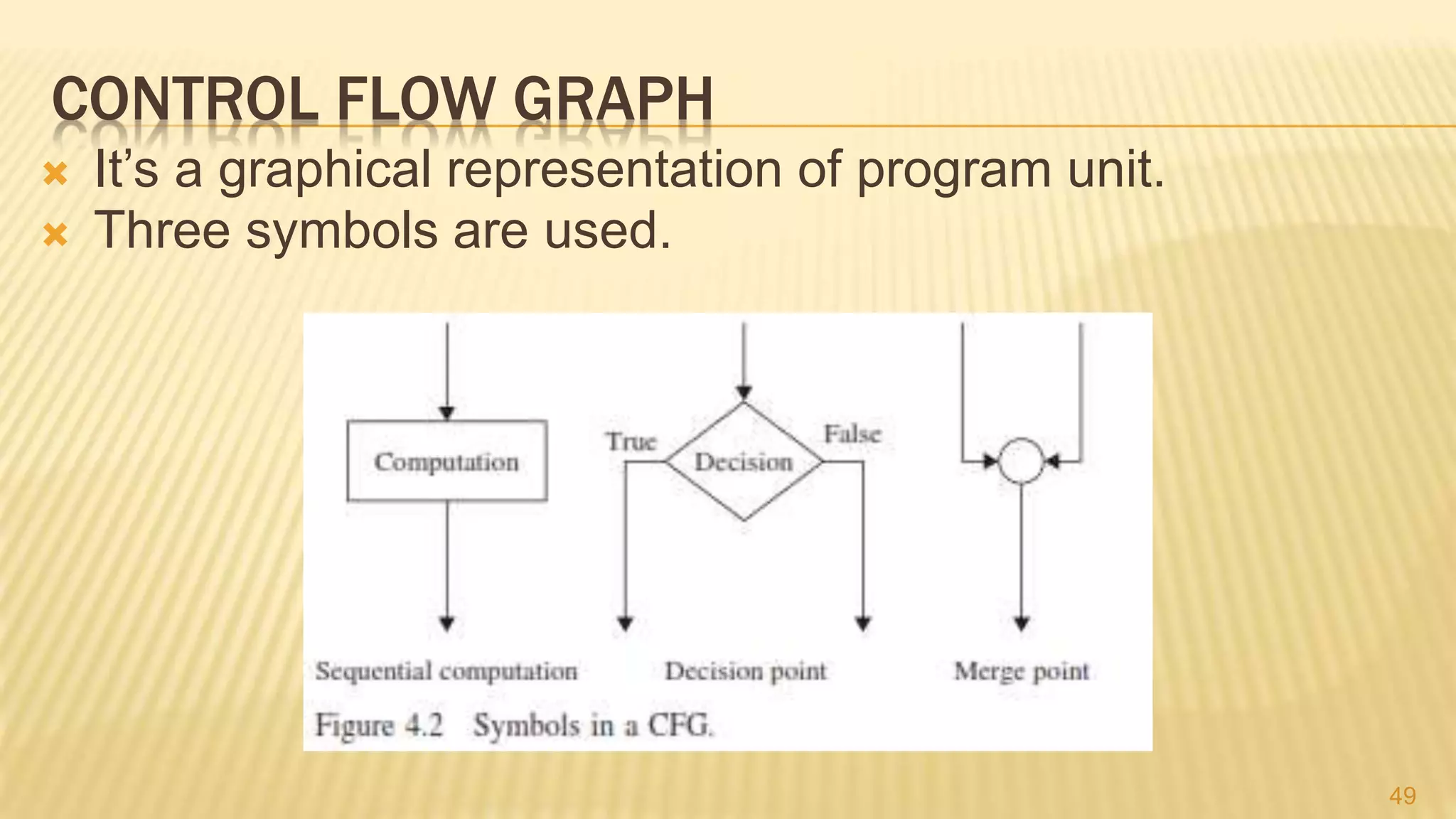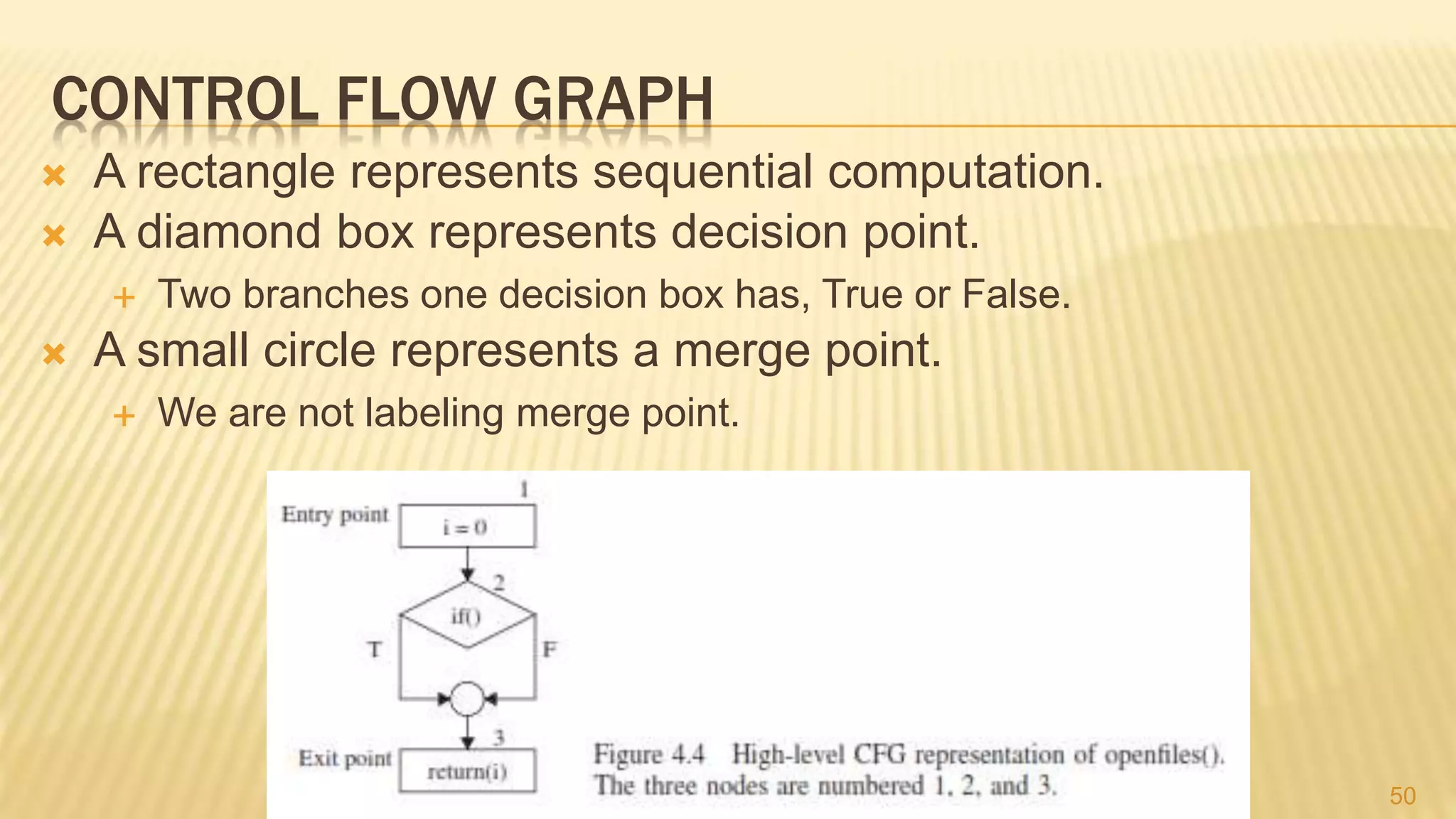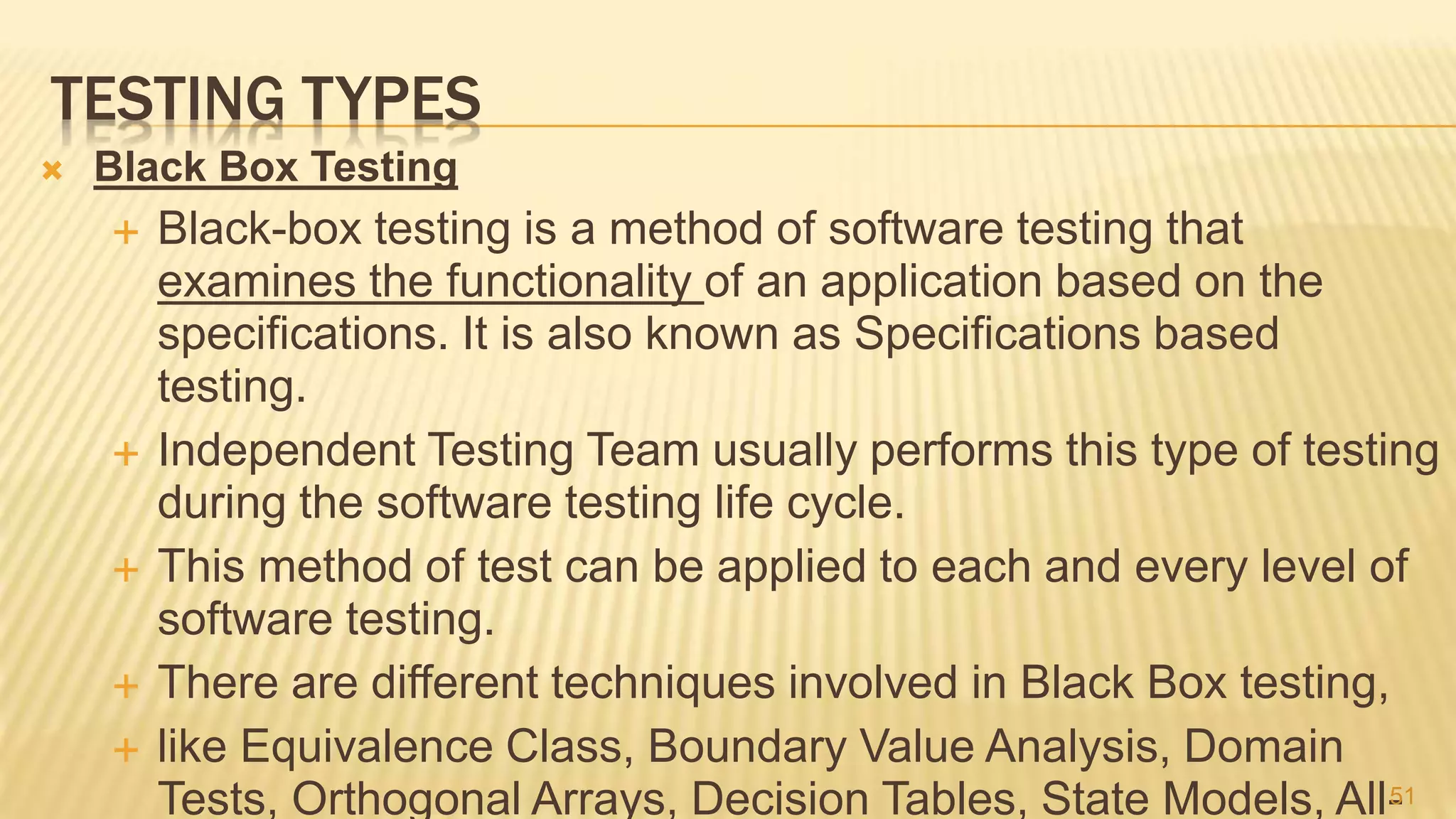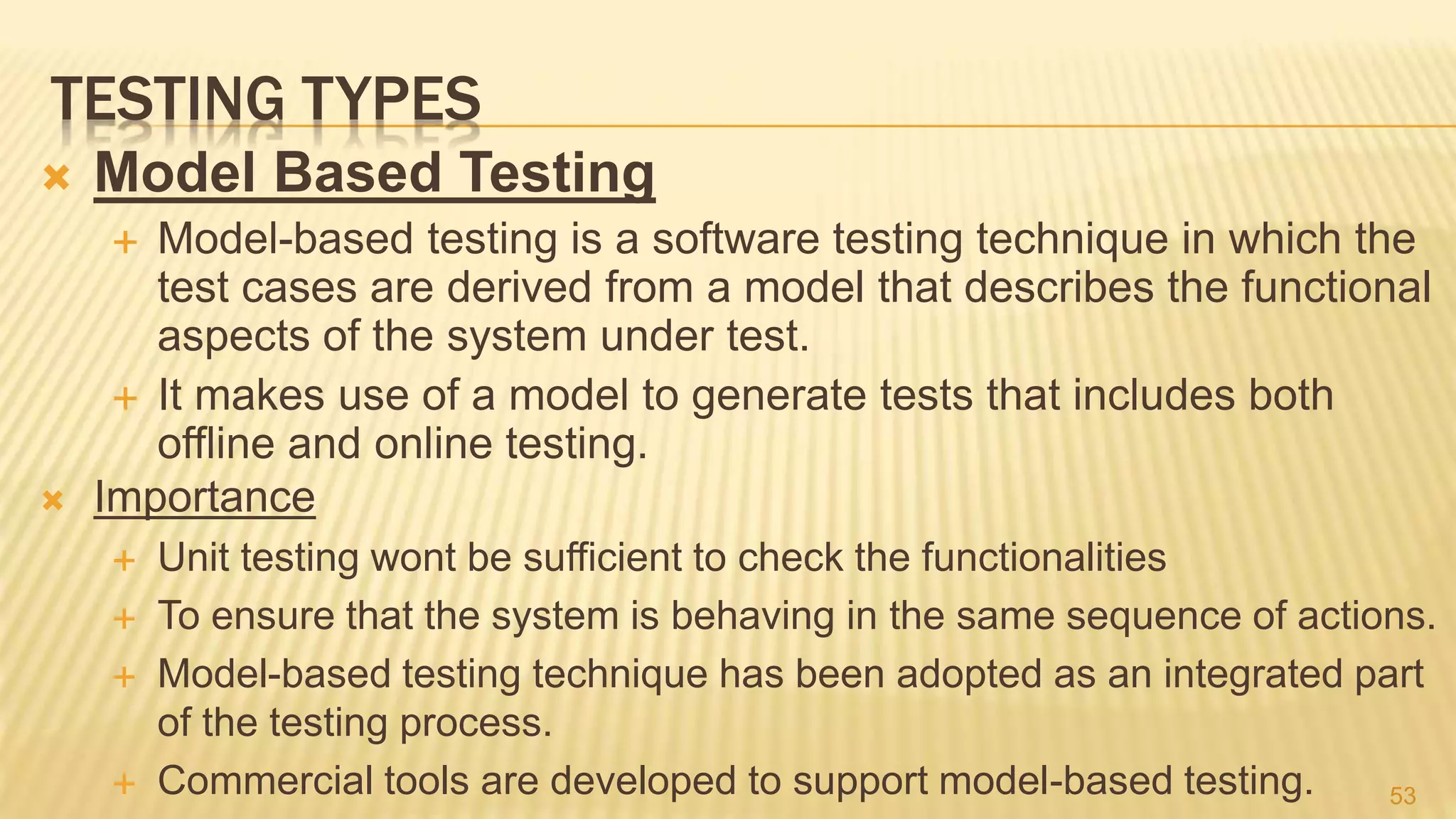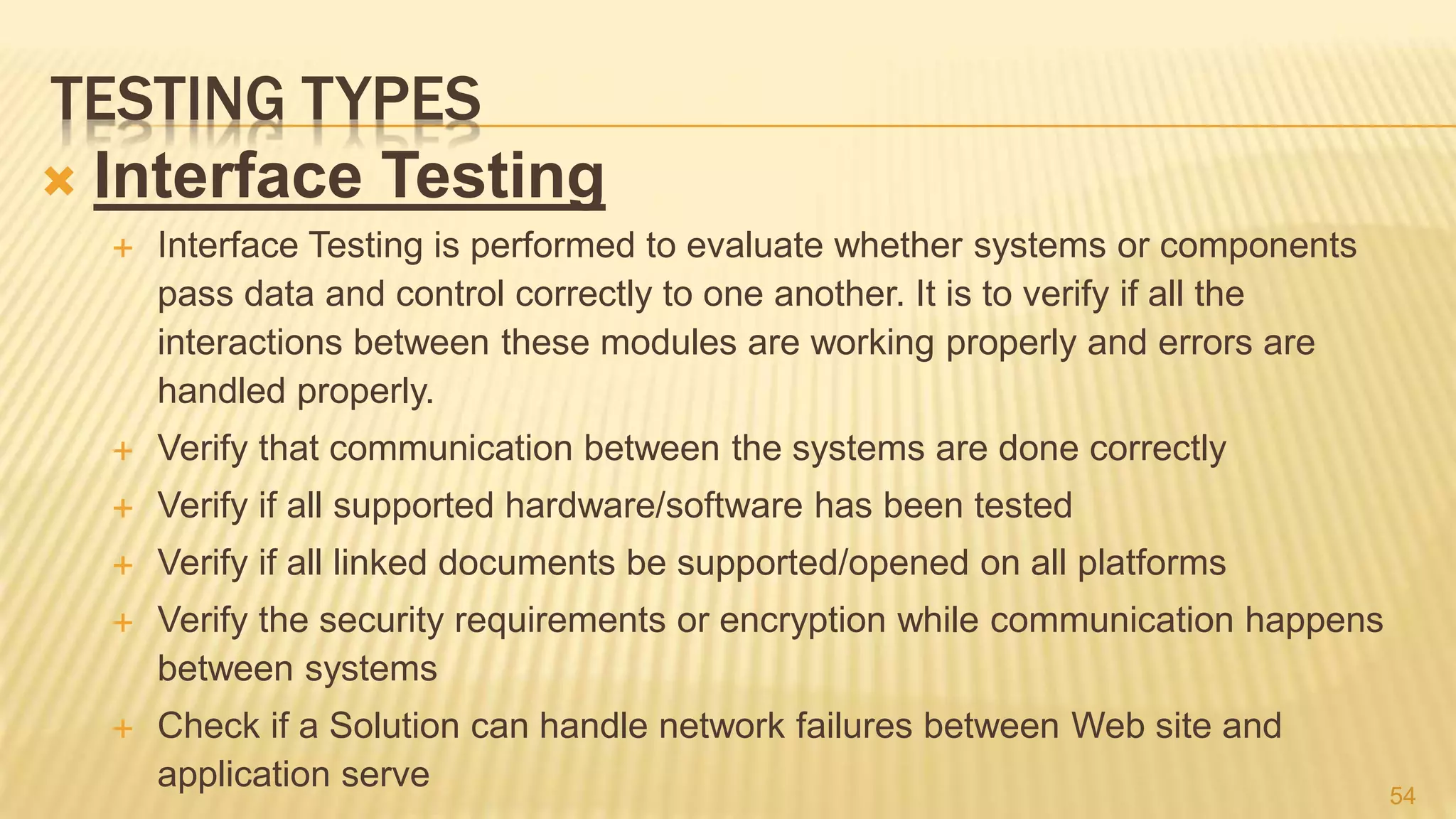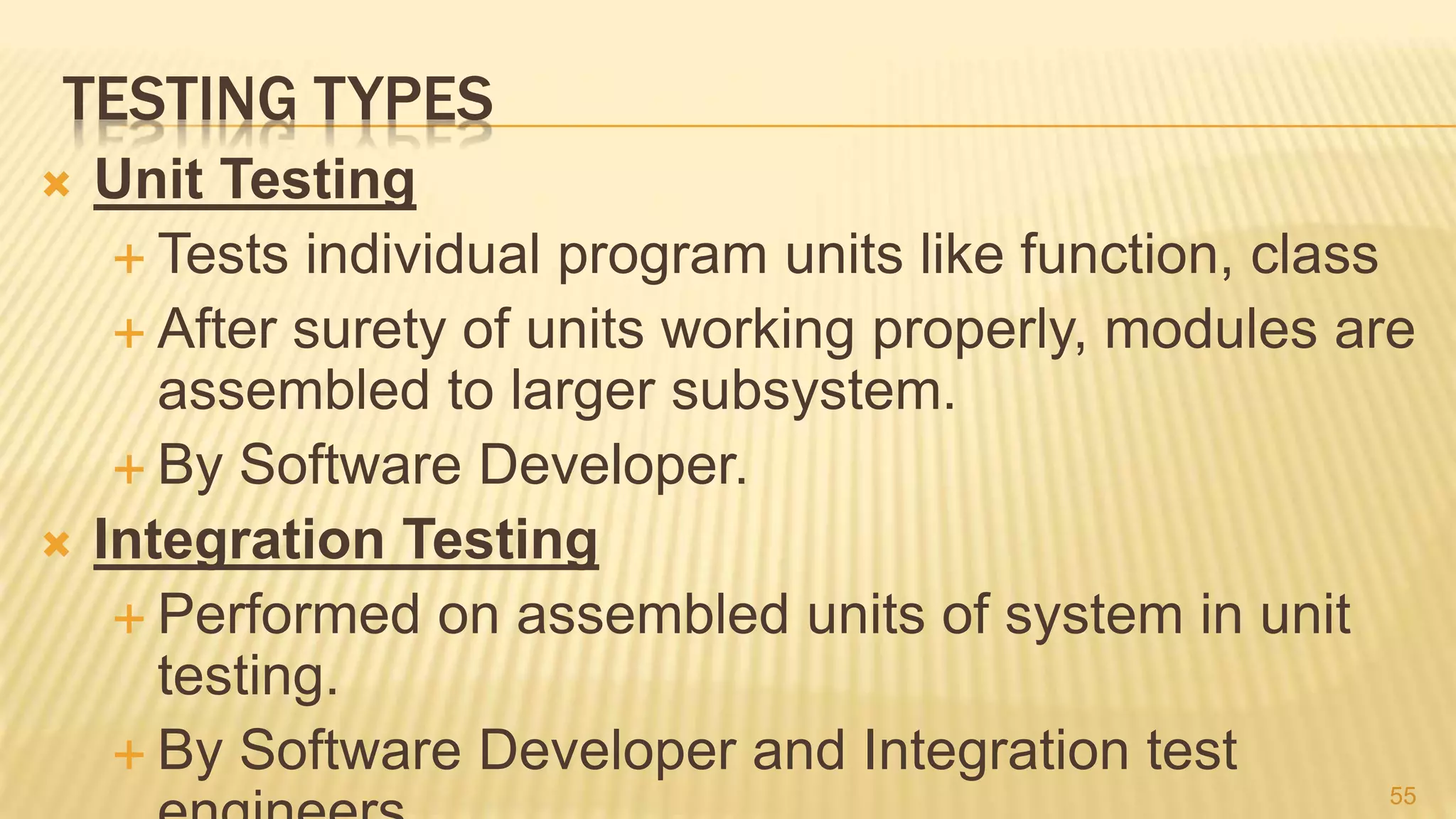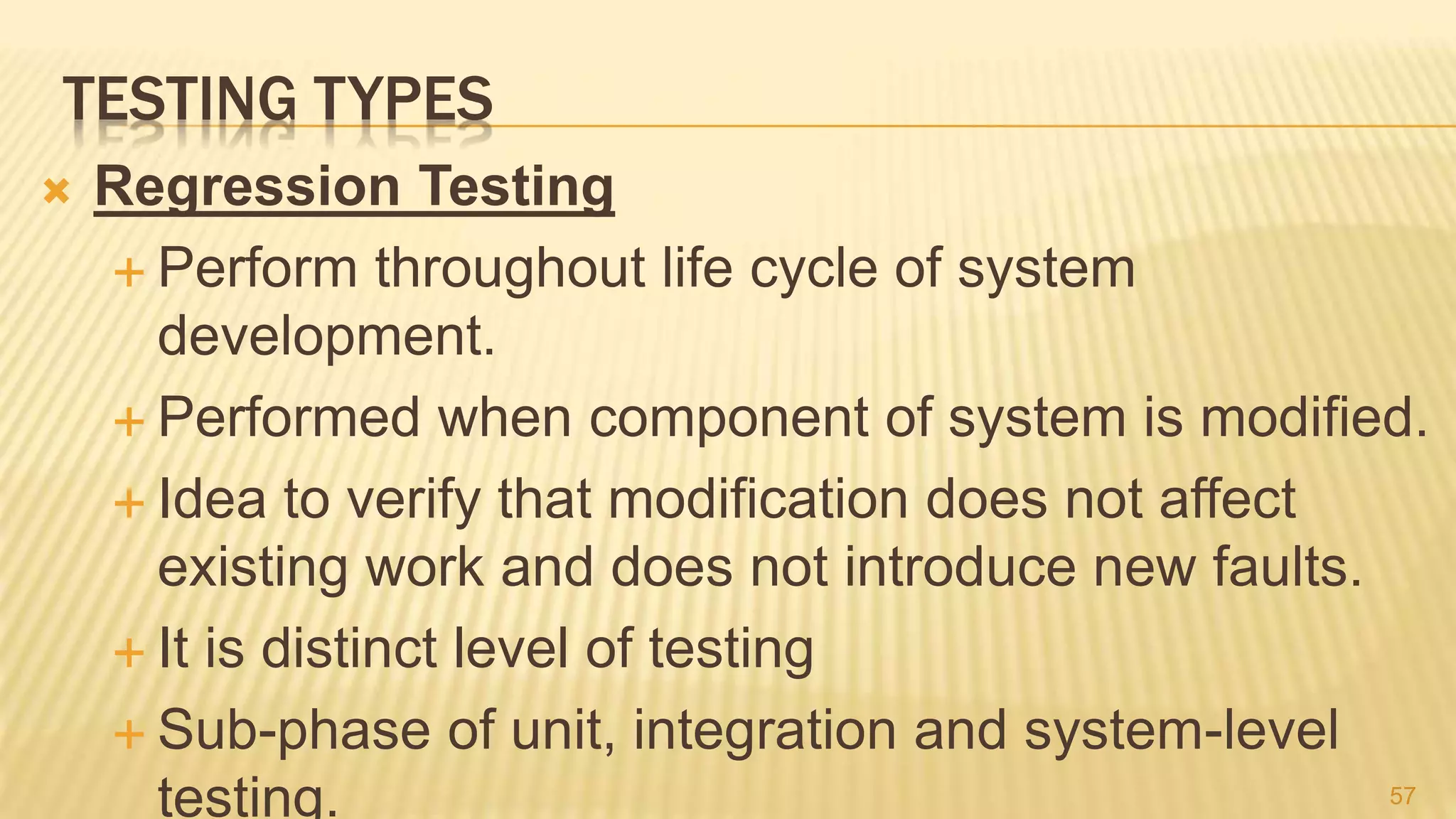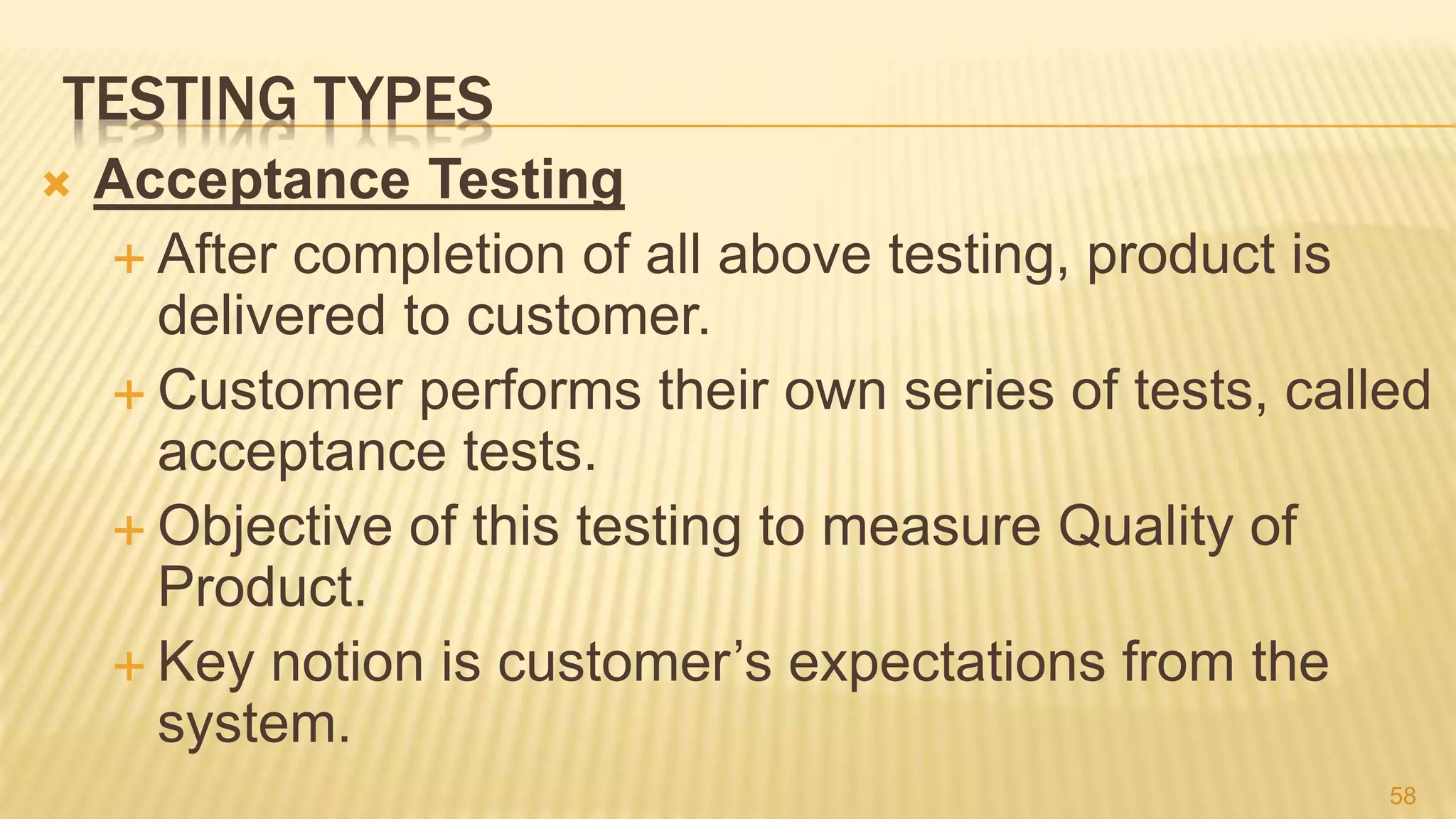The document discusses the evolution and significance of quality management in software development, highlighting key concepts from the quality revolution, including total quality control (TQC) and the lean principle. It outlines the role of testing in ensuring software quality through both static and dynamic analysis, and defines various types of testing methodologies, such as black box and white box testing. Furthermore, it emphasizes the need for effective verification and validation processes, alongside the challenges of achieving complete testing due to complex software specifications.
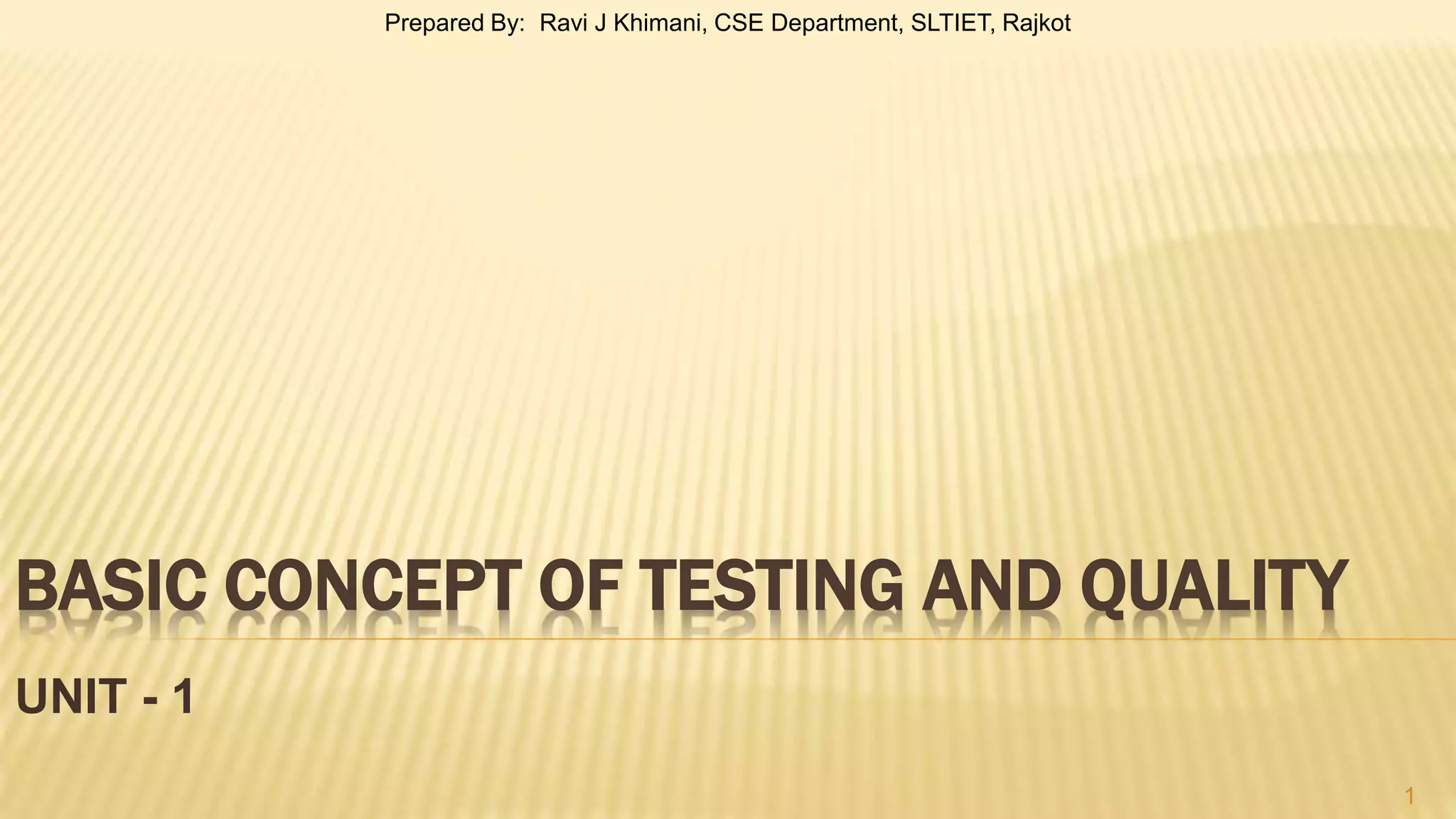

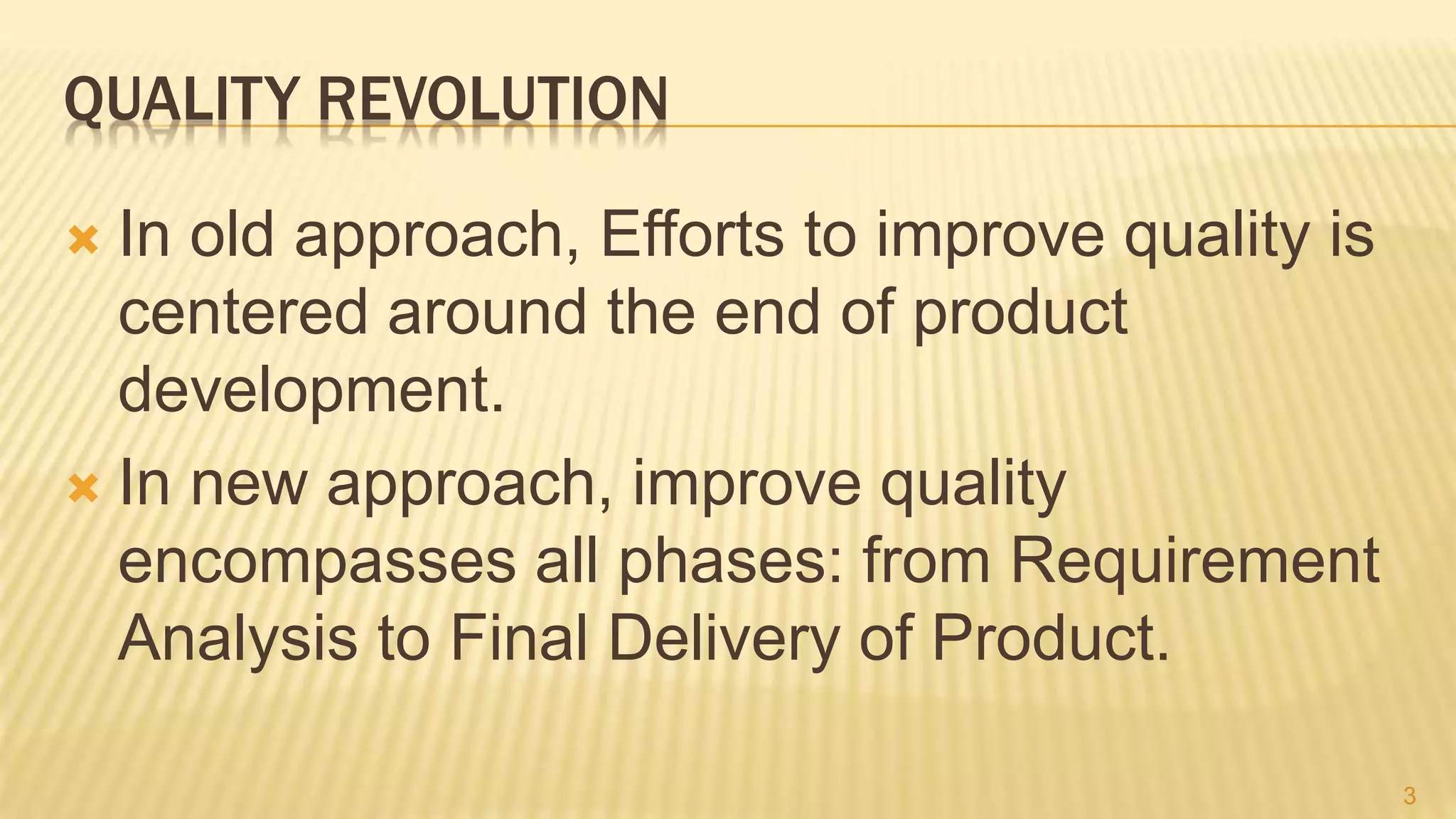
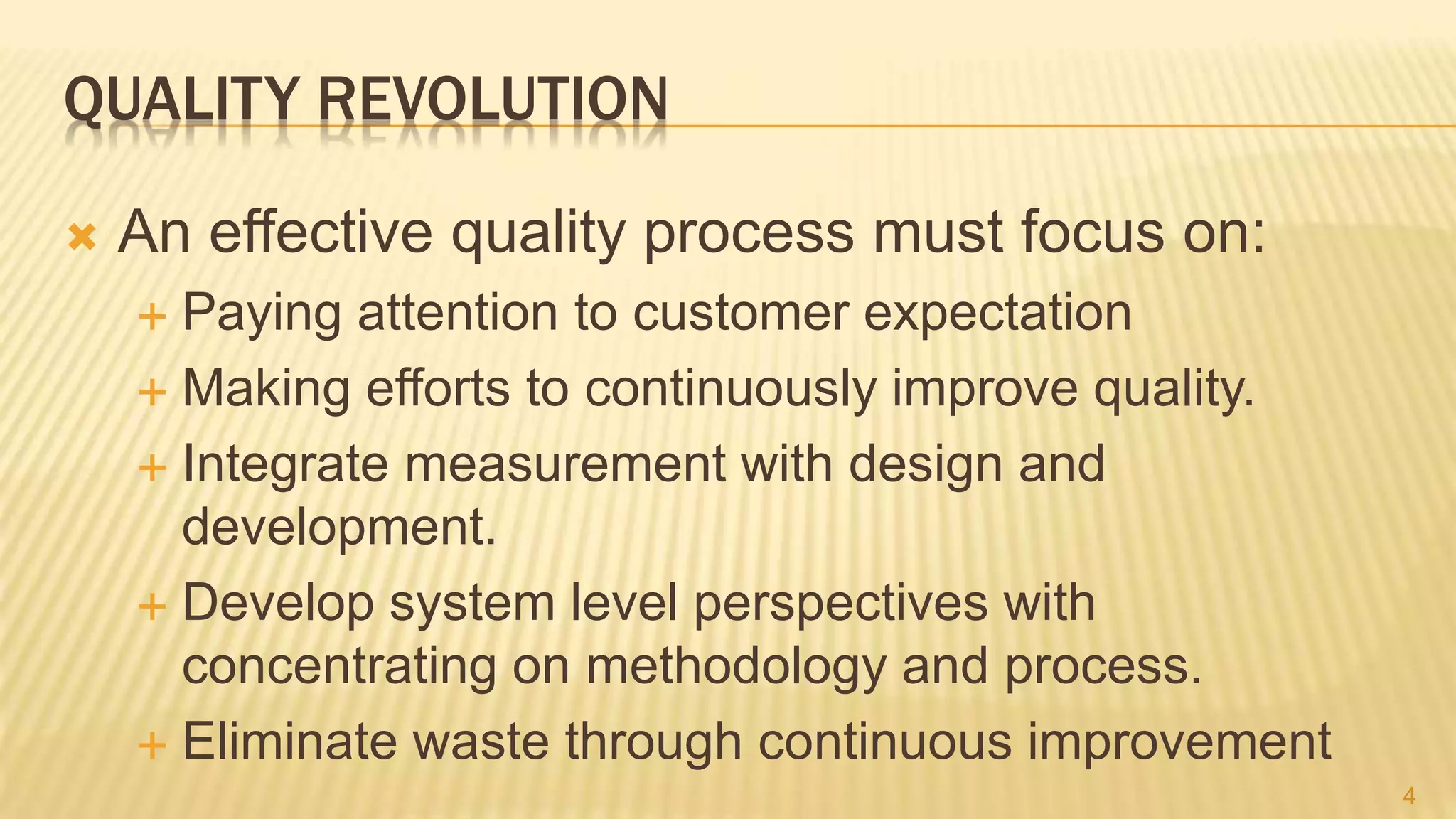

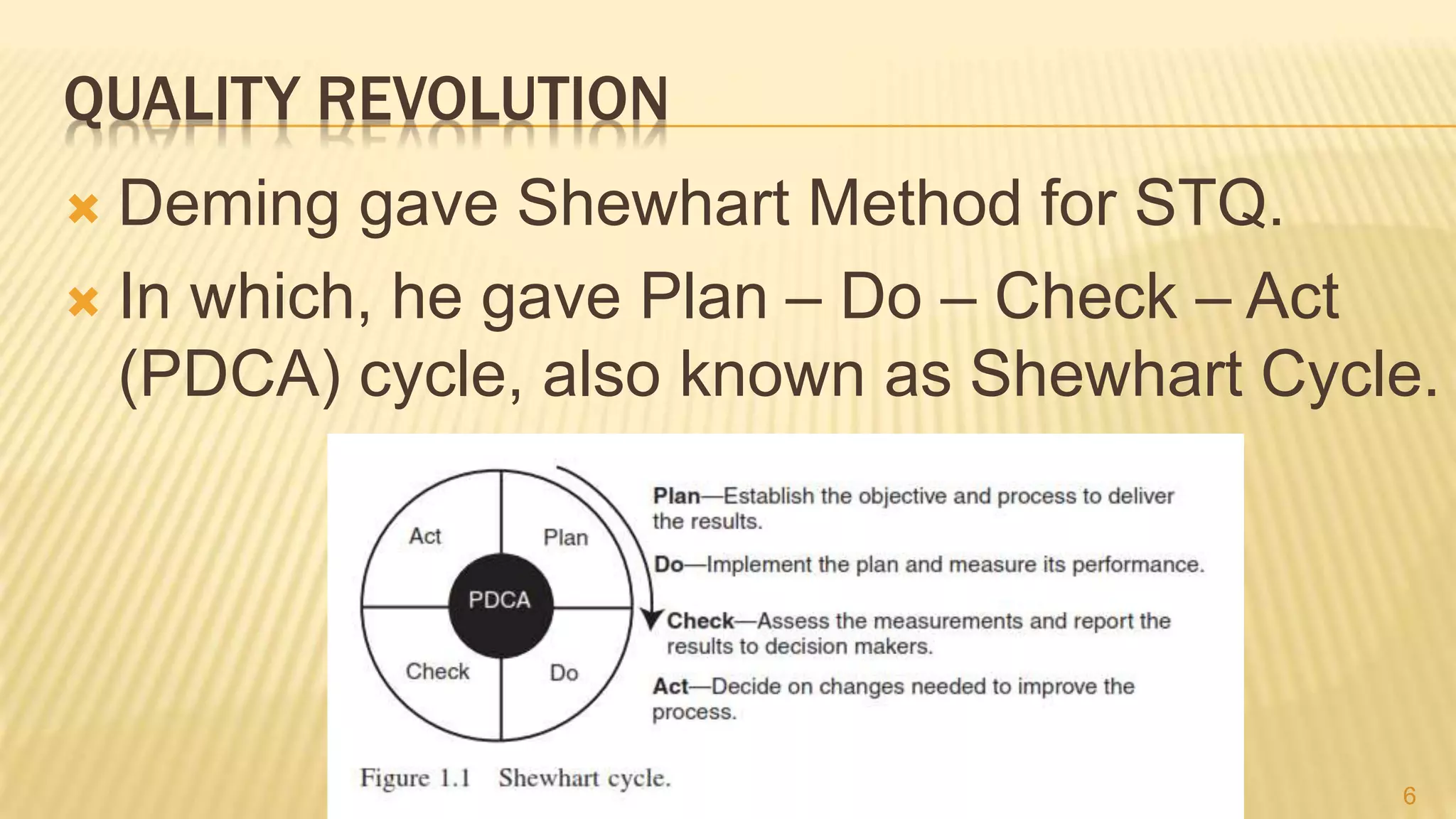
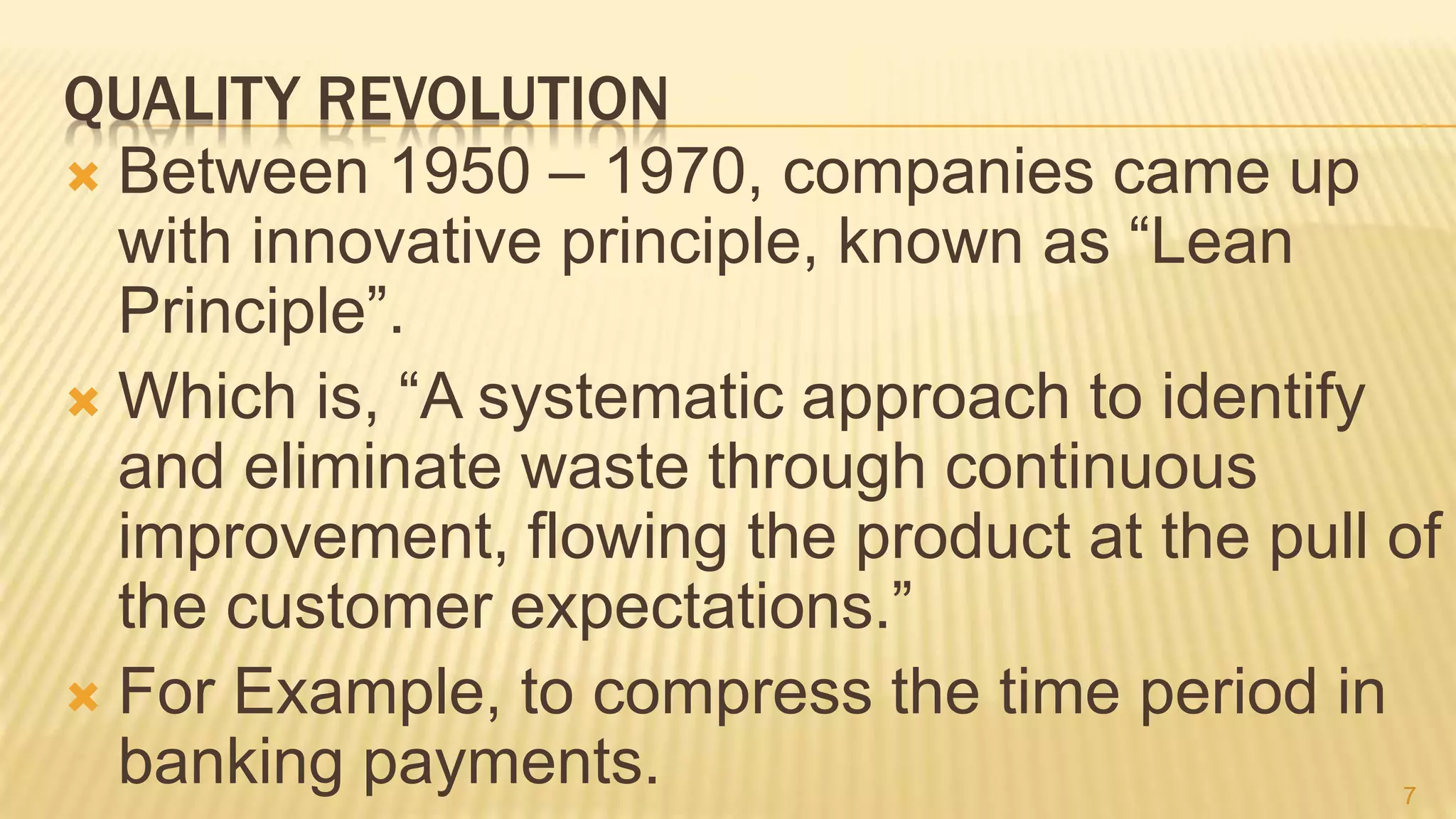

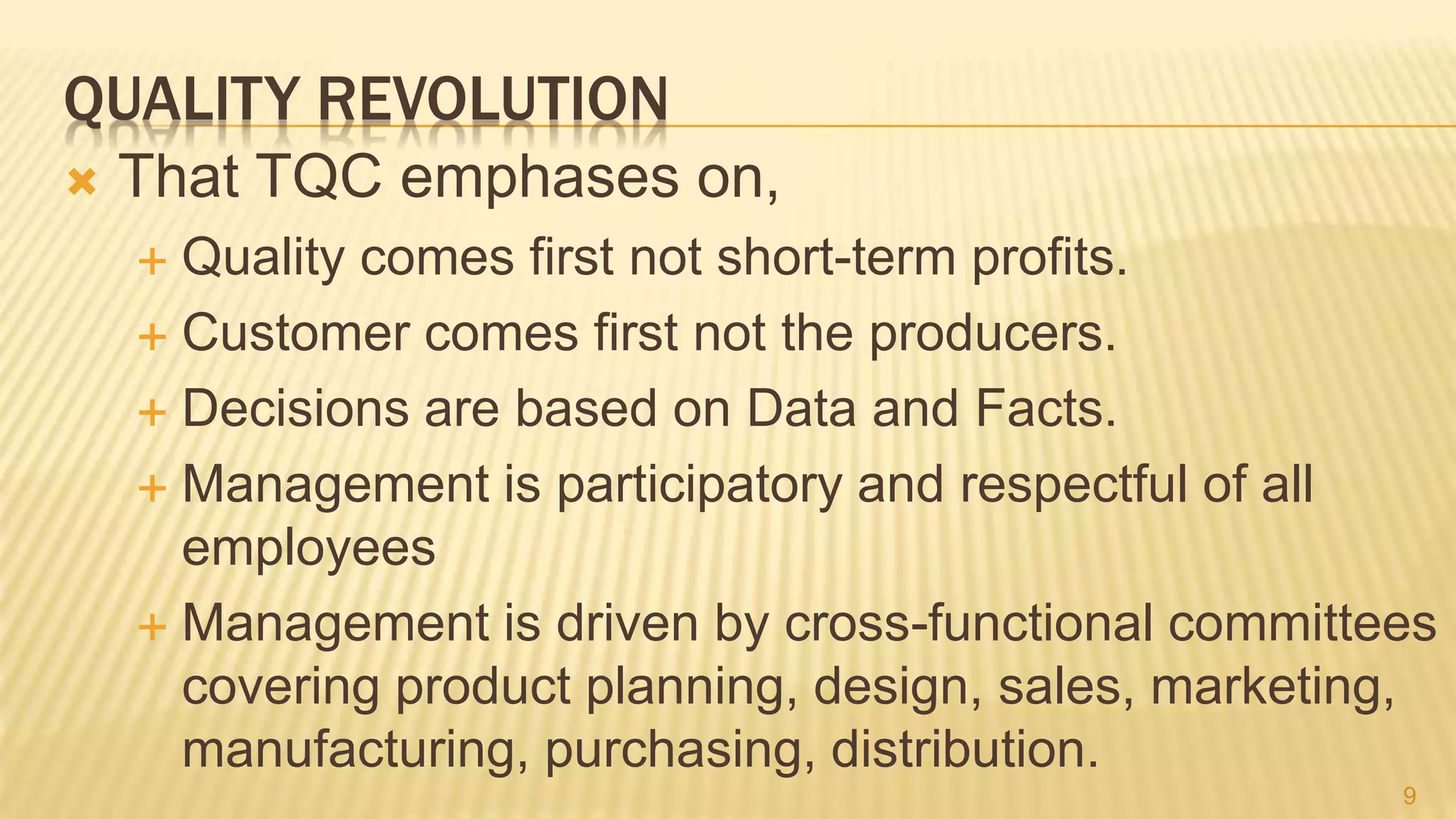
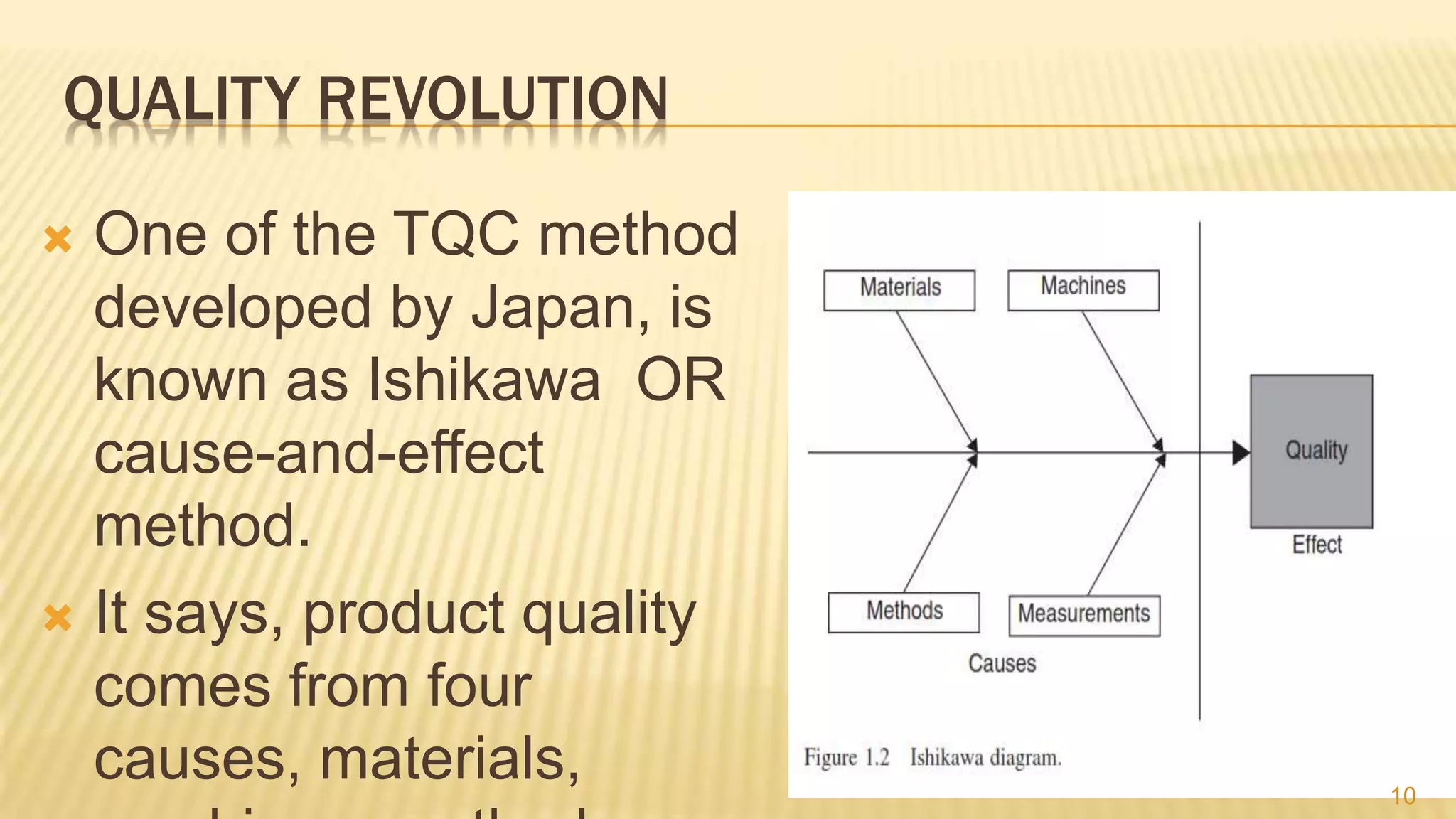
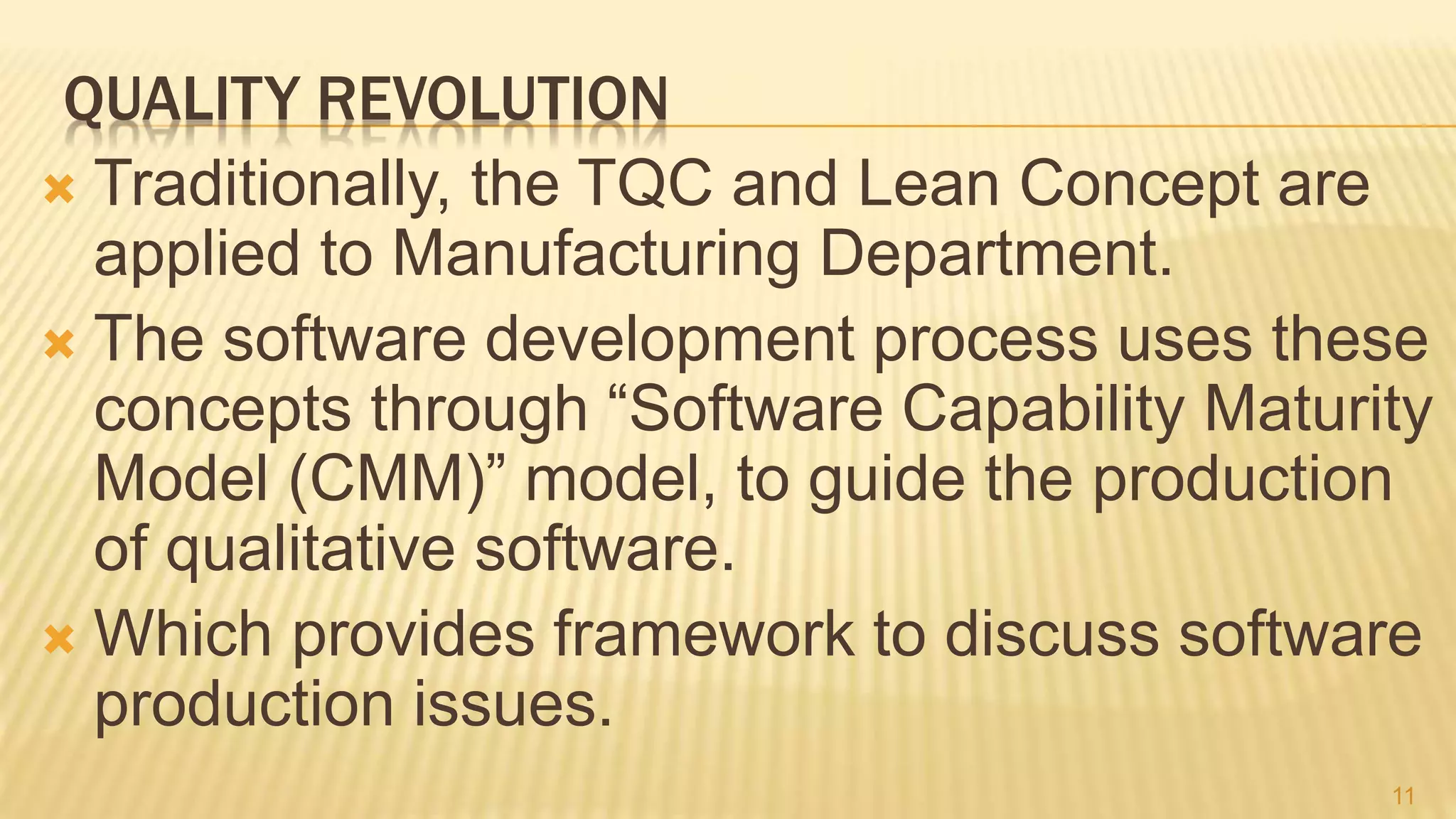
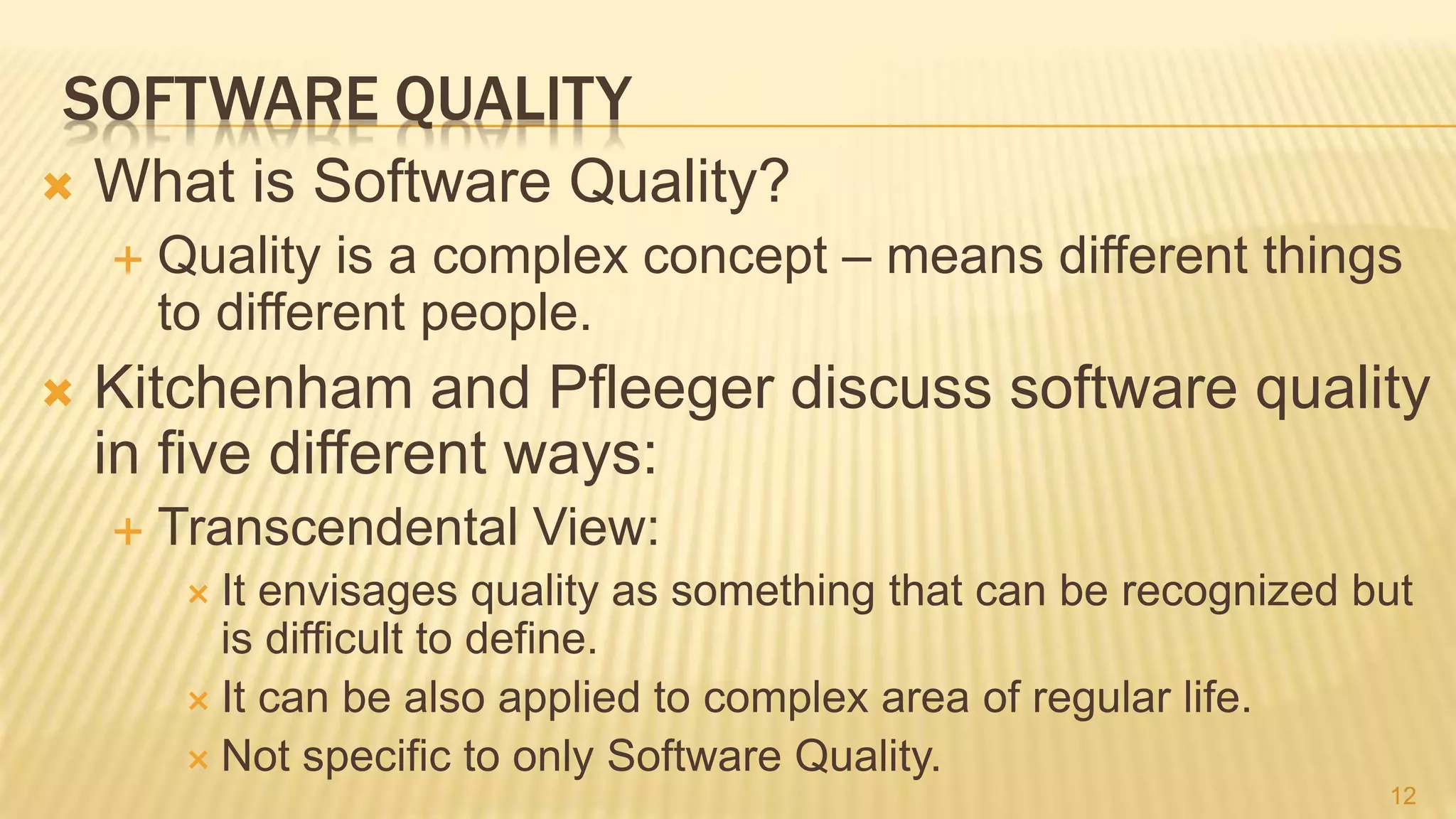

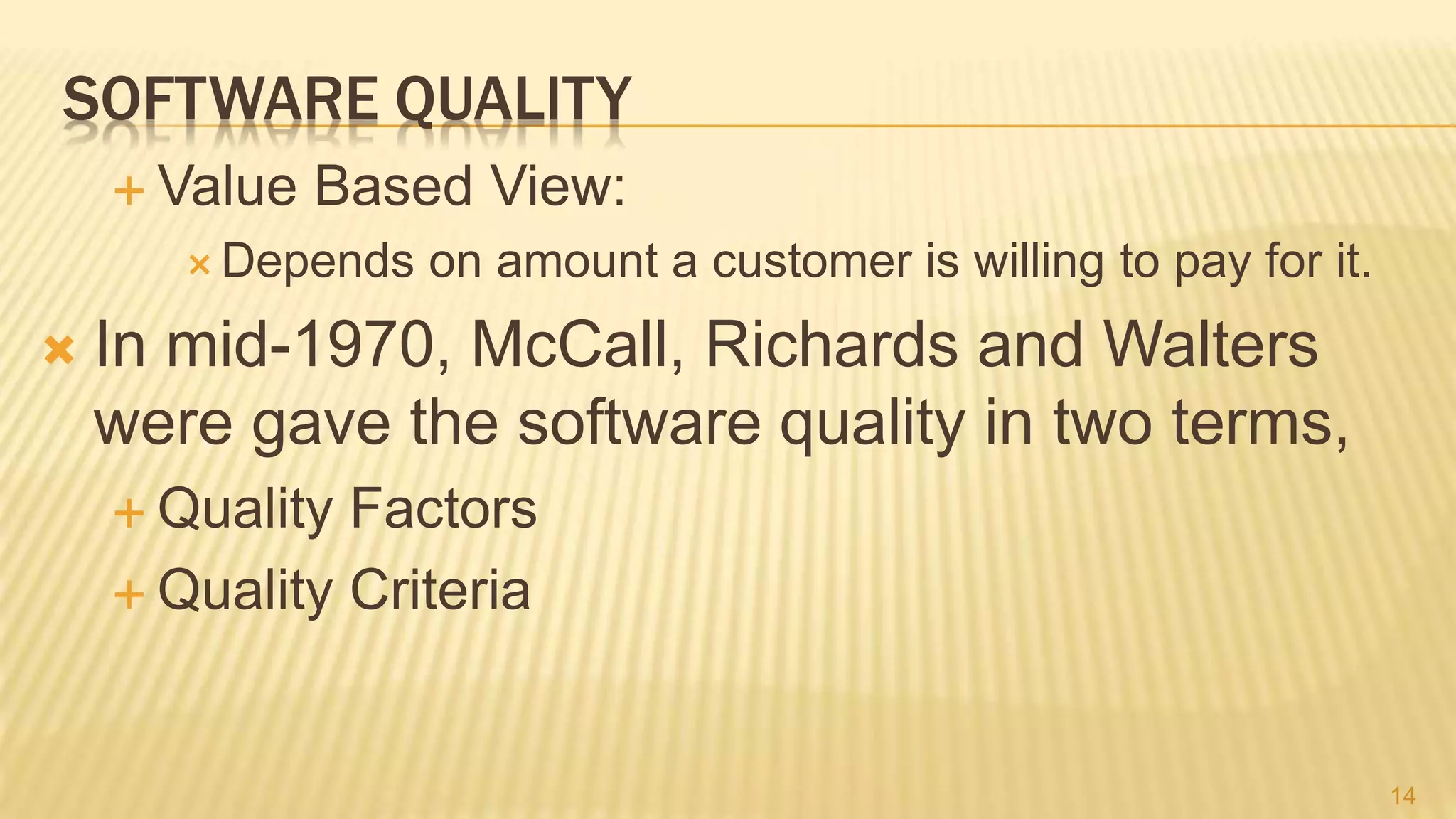
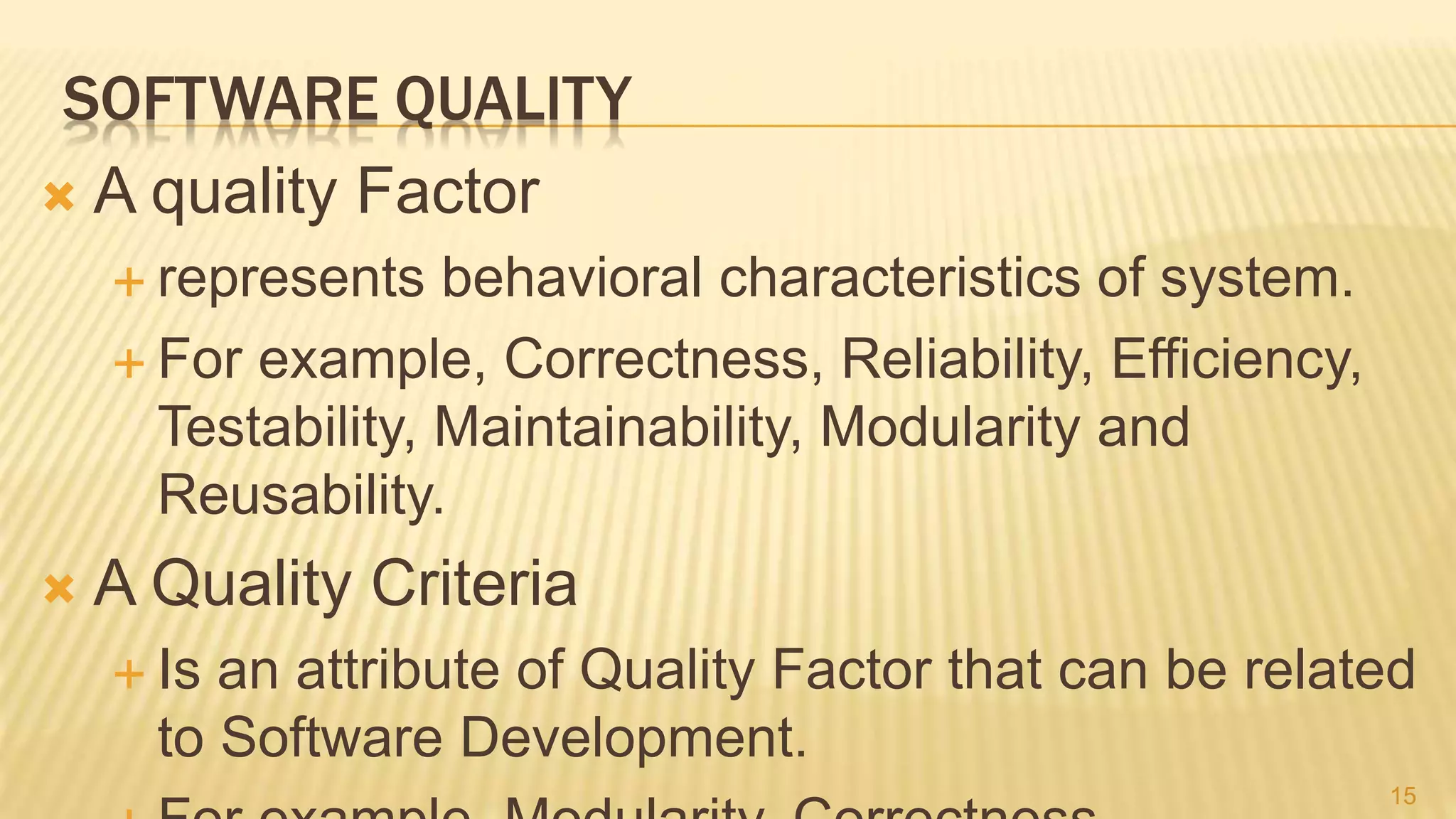
![SOFTWARE QUALITY
There are various software quality models have
been proposed for Software Quality and its
related attributes
Two most popular models are
CMM [Software Capability Maturity Model]
ISO [International Standard Organization]
In the field of Testing two popular models are
available,
TPI [Test Process Improvement]
TMM [Test Maturity Model]
16](https://image.slidesharecdn.com/unit1-basicconceptsoftestingquality-150720124949-lva1-app6892/75/Unit-1-basic-concepts-of-testing-quality-16-2048.jpg)

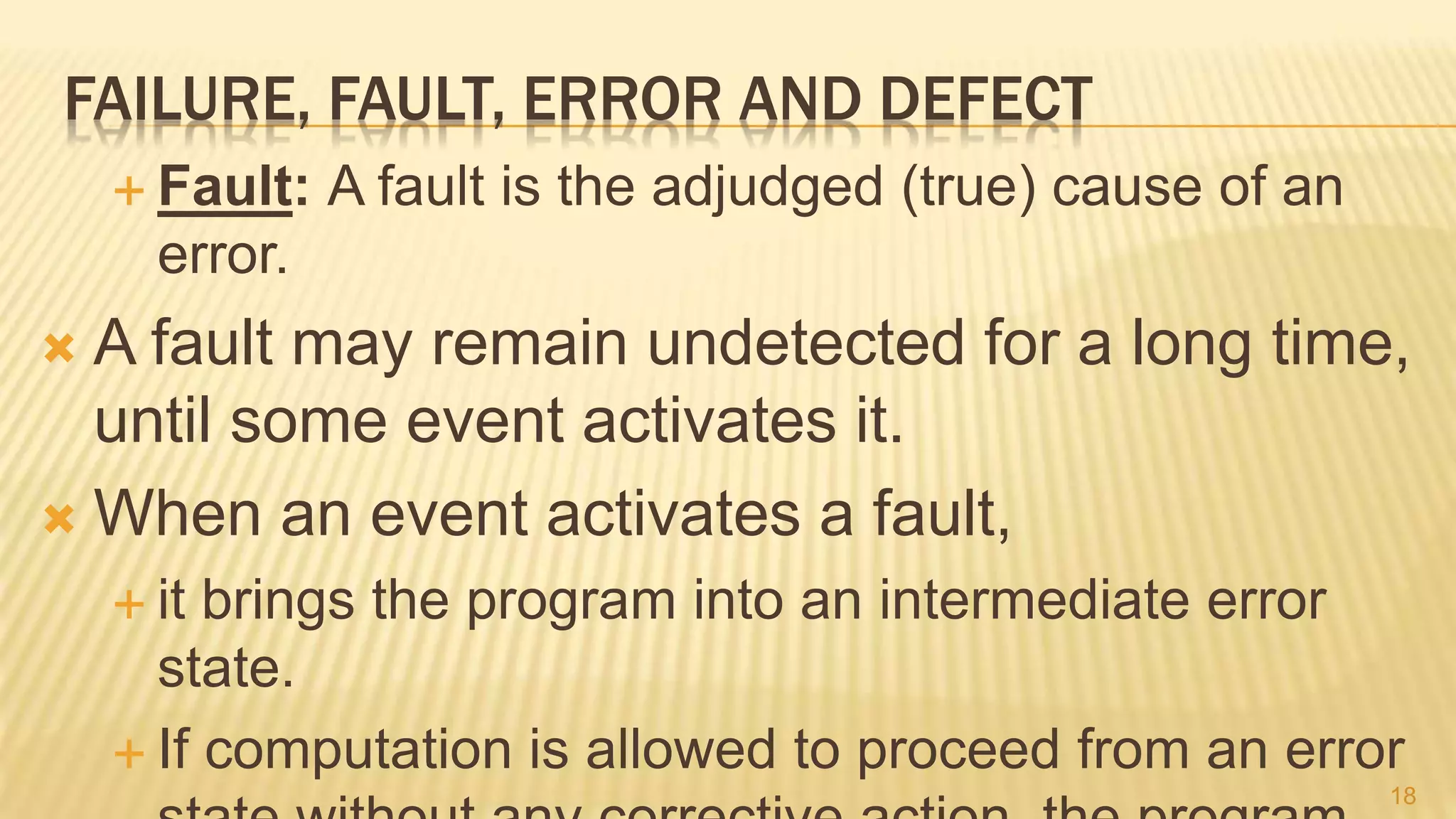
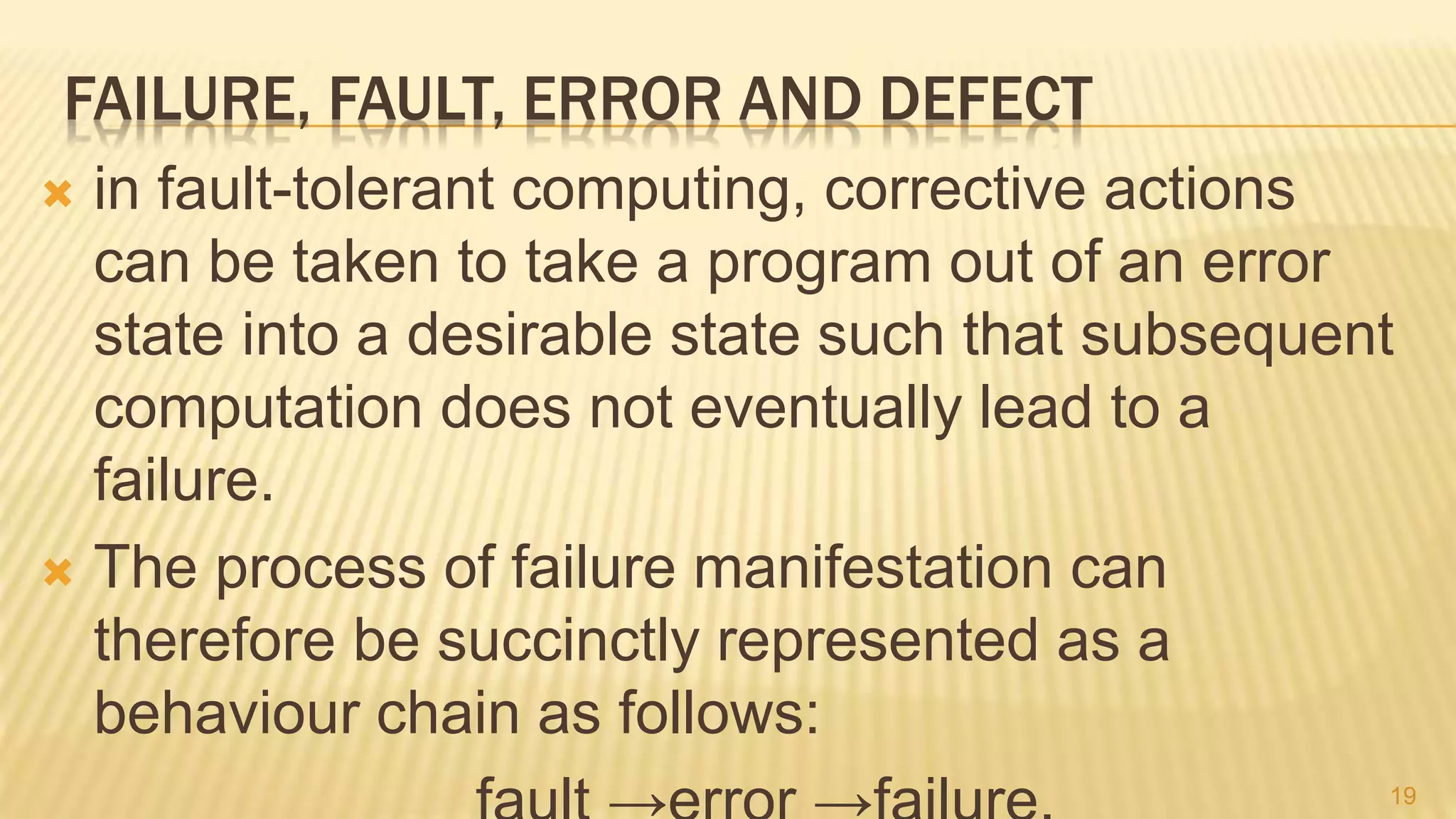
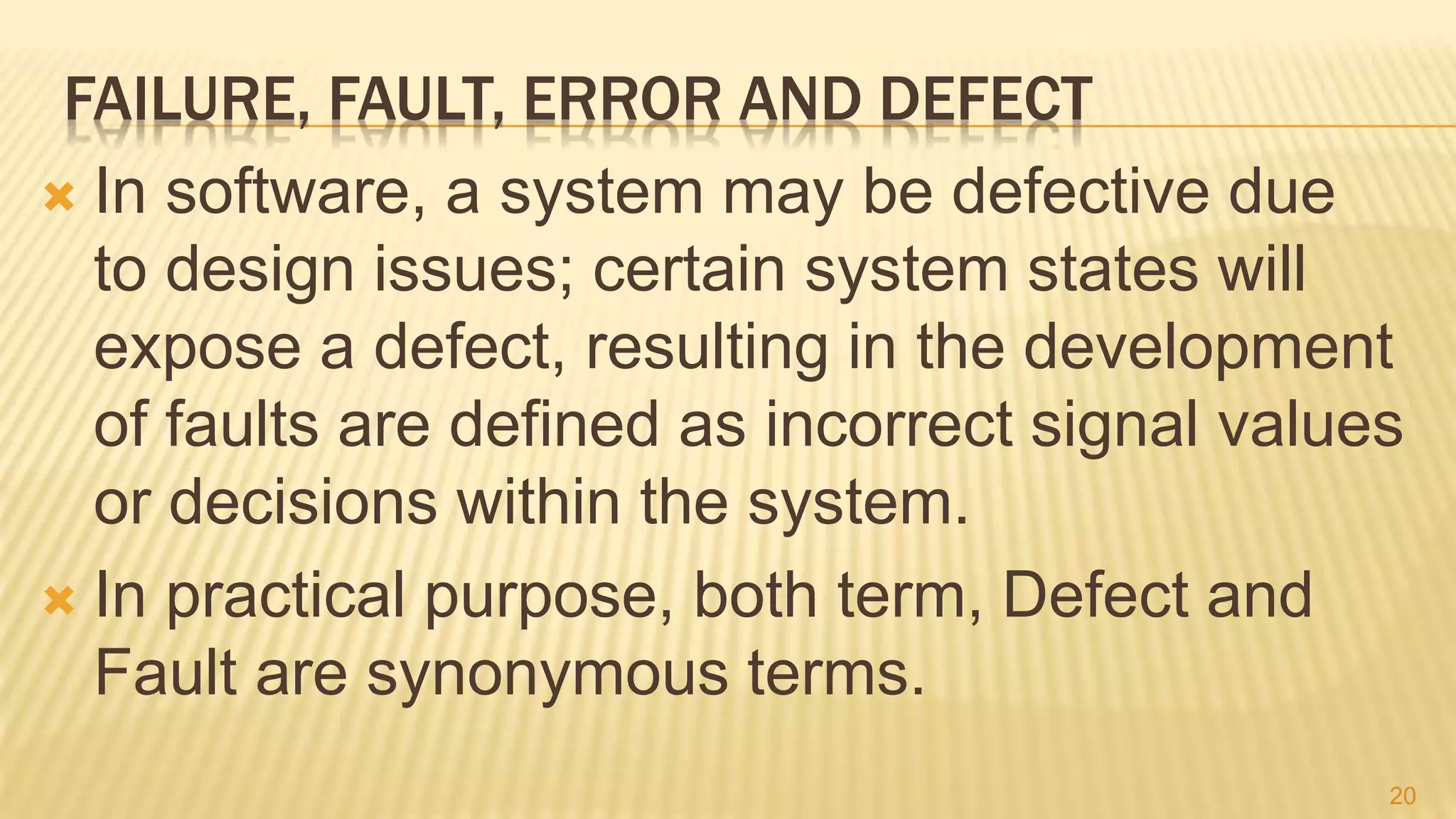
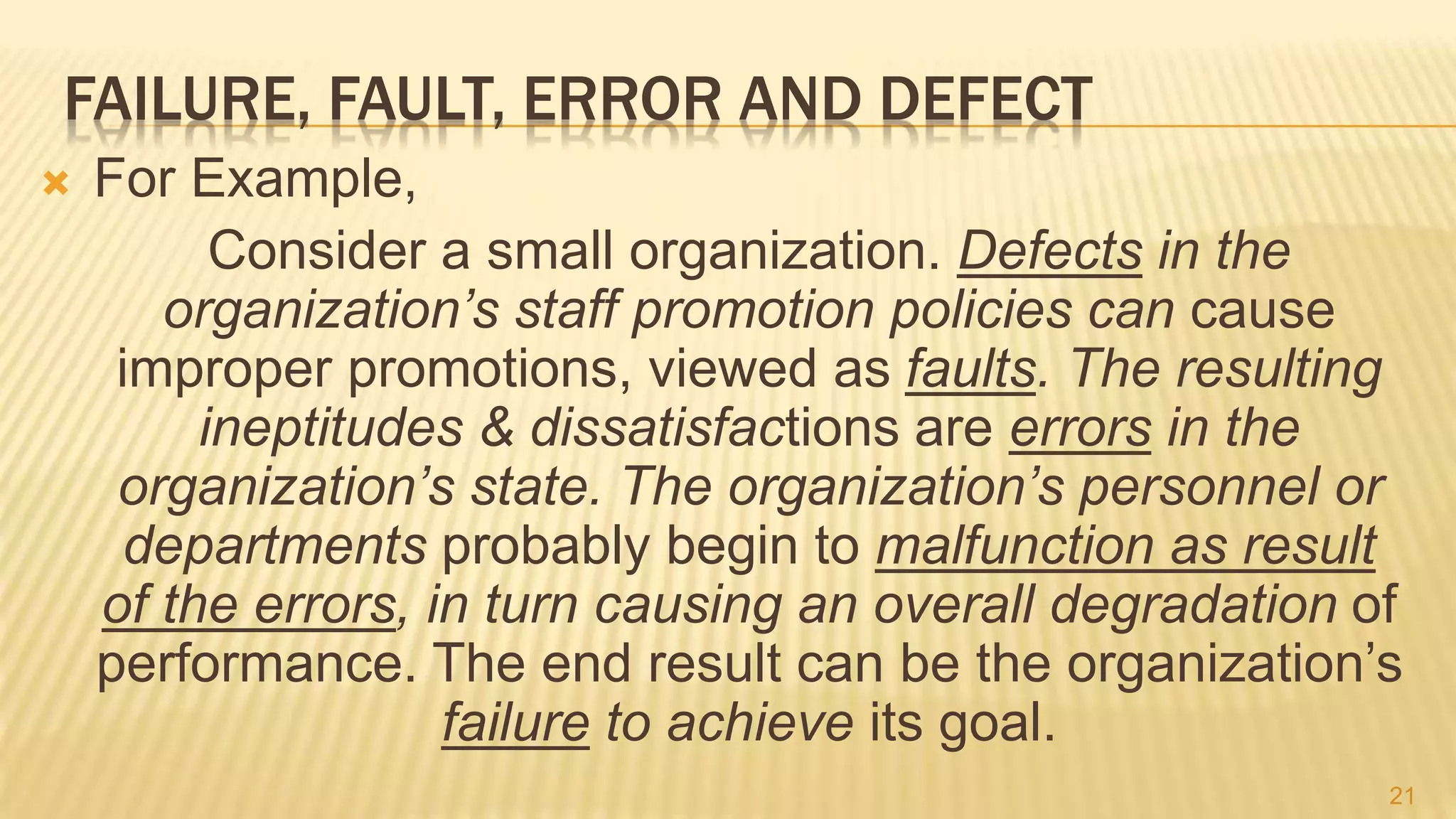
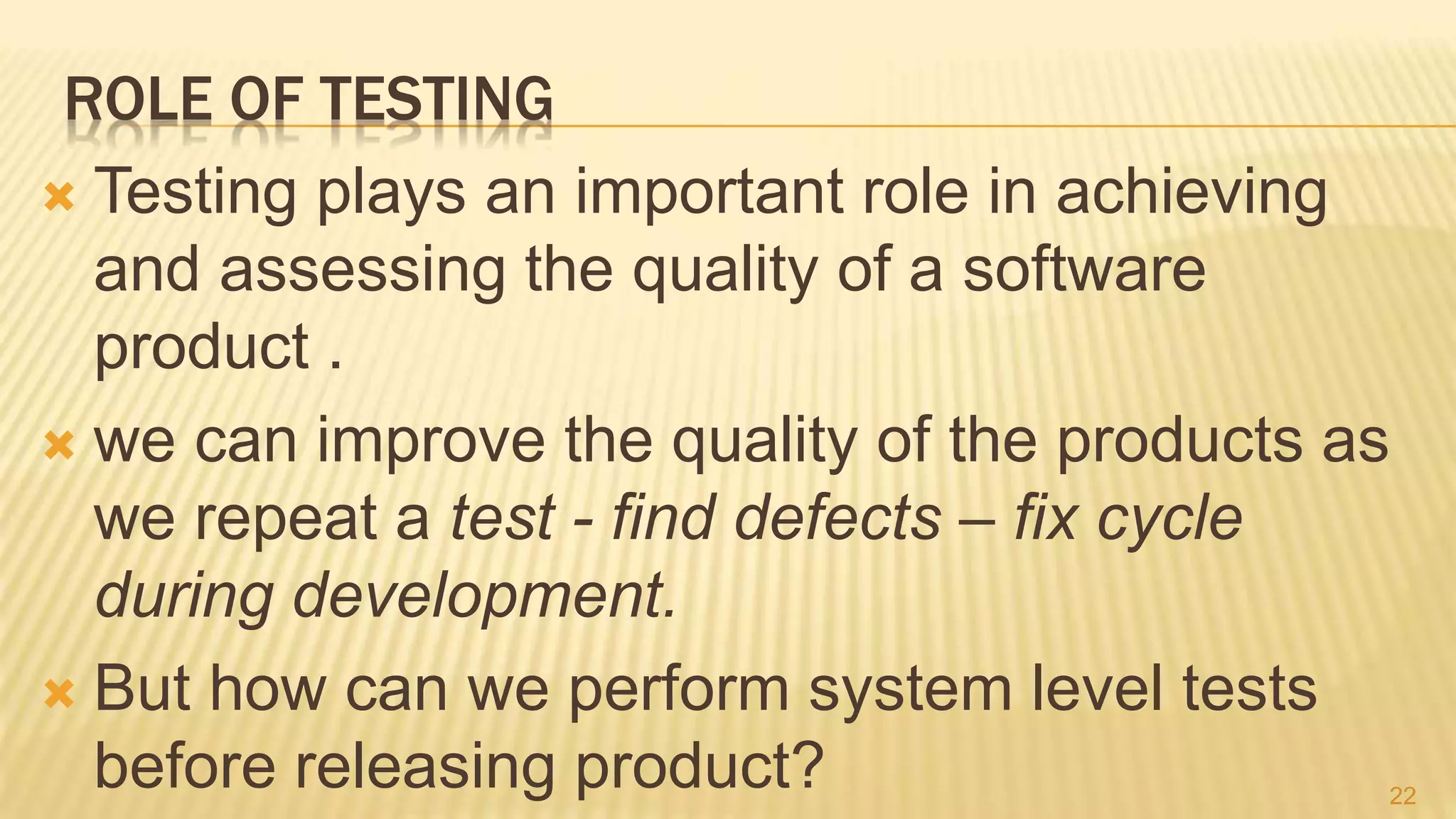
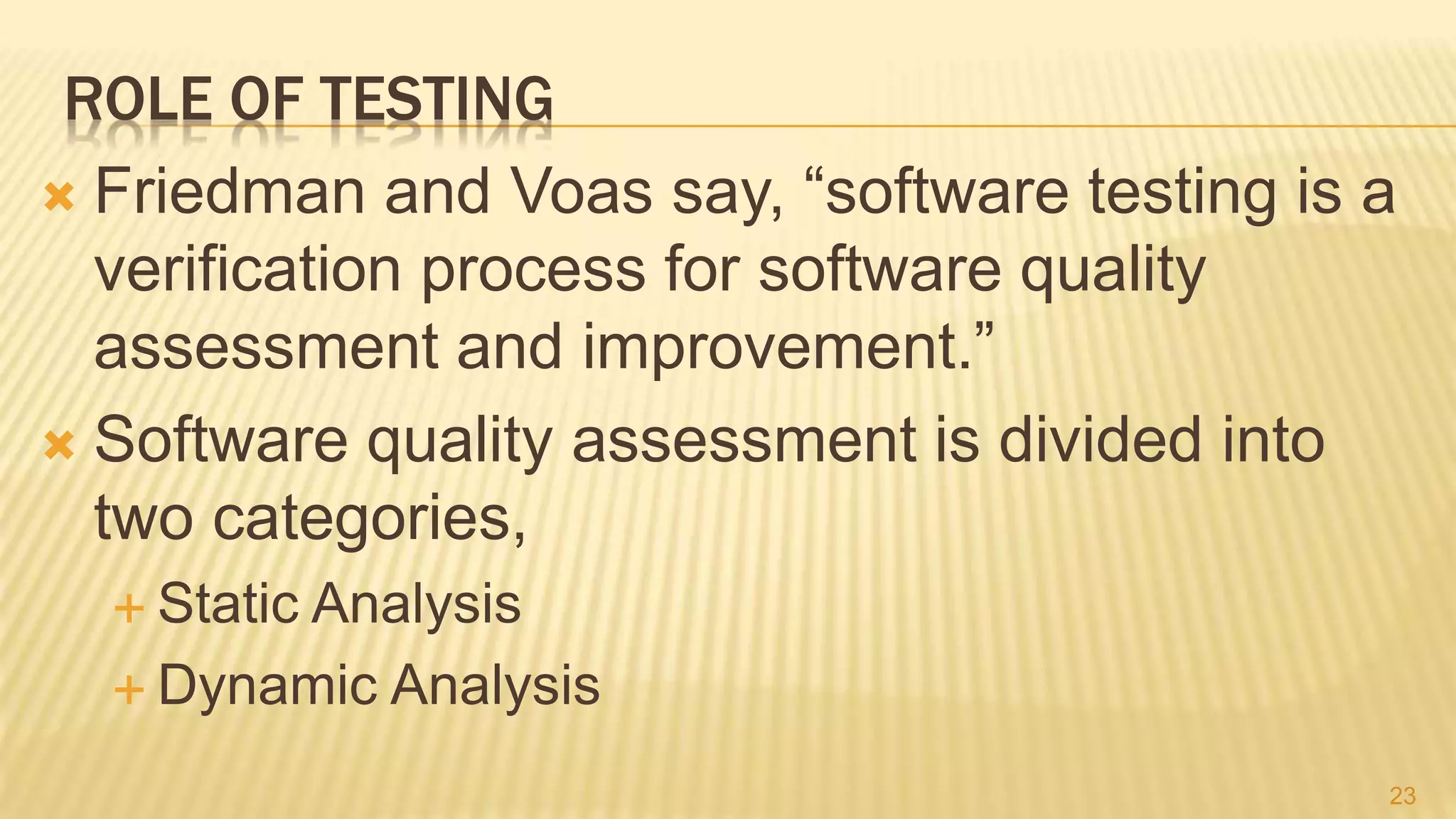
![1. STATIC ANALYSIS [ROLE OF TESTING]
It is based on the examination of a number of documents,
requirements documents,
software models,
design documents
source code.
It also includes code review, inspection, walk-through,
algorithm analysis, and proof of correctness.
It does not involve actual execution of the code under
development.
Instead, it examines code and reasons over all possible
behaviours that might arise during run time.
For Ex., Compiler optimizations are standard static analysis.24](https://image.slidesharecdn.com/unit1-basicconceptsoftestingquality-150720124949-lva1-app6892/75/Unit-1-basic-concepts-of-testing-quality-24-2048.jpg)
![2. DYNAMIC ANALYSIS [ROLE OF TESTING]
It involves actual program execution with input values.
During execution, it observes the behavioural and
performance properties of the program.
For practical considerations, a finite subset of the input
set can be selected.
Therefore, in testing, we observe program behaviours
and reach a conclusion about the quality of the system.
Careful selection of a finite test set is crucial to reaching
a reliable conclusion.
25](https://image.slidesharecdn.com/unit1-basicconceptsoftestingquality-150720124949-lva1-app6892/75/Unit-1-basic-concepts-of-testing-quality-25-2048.jpg)
![ROLE OF TESTING [CONT…]
Both Analysis techniques are complementary
in nature, and for better effectiveness, both
must be performed repeatedly and alternated.
Practitioners and researchers need to remove
the boundaries between static and dynamic
analysis and create a hybrid analysis that
combines the strengths of both approaches
26](https://image.slidesharecdn.com/unit1-basicconceptsoftestingquality-150720124949-lva1-app6892/75/Unit-1-basic-concepts-of-testing-quality-26-2048.jpg)


